The Biggest One-Off QB Seasons Since 1980
The 30 biggest one-off QB seasons since 1980, listed in order of one-offness.
How are we doing everybody? Welcome back to my Sports Passion Project, where it’s not quite the normal thing today.
I’ve been known to write a list article in my day, but I haven’t made one in a while. However, reading
and his Box Score Brain publication reignited a fire in me to go back to a project that I began years ago, to find a statistical nugget of information that nobody cares about, so Peter, I hope I’ve done you proud buddy.My goal was to find the biggest one-off QB season in NFL history. However, I ran into the problem of QB play being so different across different eras that the (nominal) difference between great and bad was so small in previous eras that nobody prior to 1980 made the list. That is not right. Surely there are one-off QBs before 1980 too, but I did not want to entirely remake the formula I used to create this list, so I decided to restrict the scope to only cover 1980-onwards. Not the entirety of NFL history, but surely this will be long enough back in time to cover most of the lifetime of most of my readership. I deemed this acceptable.
It’s long been a soft goal of mine to make this Substack publication last long enough to write the His Year article on each and every one of these players. I’ll let you know when the box is already checked, and give links to click for more detail on these players where applicable.
The order of this list was determined by a mathematical formula that I devised, but don’t let that fool you into believing this list is objective. I created the formula, with no input from anybody else, so therefore this list is (in essence) ranked by my personal opinion. I think there can be no debate on either the number one or number two spots on the list, but for all the rest of the entries, this means I will be open to criticism about the specifics.
The players will be listed in order of one-offness, the distance between their one big season and the rest of their career. There are multiple ways to create distance, and multiple ways to be a one-off player. A good QB can play great. An okay QB can play good. A bad QB can play okay, etc.. Instances of all those things are seen on this list. Once again, players are not ranked by quality of their best season, or quality of career, or anything of the sort. More distance between your best and the rest means a higher spot on this list.
Without further ado, let’s get into the list, beginning with some honourable mentions.
Two-Off Players:
I’d like to start out with a list of honourable mentions, or as I’ve termed them: two-off players. These are players that played to a level that they were able to reach again, but only once, listed in no particular order.
Chad Pennington: Everybody around here knows by now about 2002 Pennington. My Substack exists because of 2002 Pennington. If you don’t remember how awesome 2002 Chad Pennington was, I’ve written two articles about it. Check out this one. However, with the way Chad’s career turned out, if not for his fantastic 2008 comeback season he could’ve been well within the top ten on this list.
Andy Dalton: You don’t remember how awesome Andy Dalton was, but 0.272 EPA/Play and 4 CPOE in a topsy turvy 2015 season that saw Andy be the best QB in the NFL before getting injured and losing the last quarter of the year speak for themselves. Andy never got anywhere near this level of performance again. If not for still being pretty good in his 2016 follow up, he easily could’ve been on this list.
Carson Palmer: Along with Chad Pennington, Carson is the ultimate two-off player. Carson’s MVP calibre 2015 campaign where he generated 0.314 EPA/Play on a 5.3 CPOE on the league’s best team would have landed him high on this list if we just shut our eyes and pretend his fantastic 2005 never happened. It’s weird to have two such high level seasons ten years apart, with not a whole lot in between, but I suppose it technically proves it was in there all along.
Tom Brady: One of the best QBs of all time had one of the best seasons any QB has ever had in 2007, and never got close to that level ever again. The closest he ever got was 2011, without which Tom would’ve qualified for the bottom spots on the list.
Jeff Garcia: Probably somebody you thought was going to be on the list. Jeff Garcia’s 2000 can compete with any season Joe Montana or Steve Young ever had in the red and gold. He would never reach that level again, but his 2001 is also so good that I don’t feel comfortable calling Jeff a one-off.
Kordell Stewart: Another man who many would’ve expected to be on the list, and yes. His 2001 is head and shoulders above anything else he was ever able to do. However, his 1997 is just barely close enough to that level that he was able to avoid a place on this list.
I like two-off players, because one-off players have this stigma that they were never that great in the first place. If you can repeat your best performance, even if you can only do it once, it washes a lot of that stigma away, and I think that’s a good thing.
However, none of the below players get the same treatment. All of them were able to reach a performance level that they were never able to get close to ever again, forever becoming statistical anomalies for people to like me to look back on and say ‘how was that guy able to put up those results?’
One-Off Players:
The list will be 30 players long, both because I thought that was a fun length (top tens and 15s are overdone), and because I wanted the list to be long enough to showcase the man in the 30th position. You’ll see what I mean.
Let’s begin. The 30 biggest one-off QB seasons in the NFL since 1980, starting with a name that may get me in some trouble.
30: Lamar Jackson
Best Season: 2019. 0.342 EPA/Play (1st); 3.8 CPOE (6th); 8.19 ANY/A (4th)
Second Best Season: 2023. 0.135 EPA/Play (9th); 3.5 CPOE (10th); 7.34 ANY/A (4th)
While Lamar has does have two NFL MVPs, this is my publication. We don’t have to respect the media’s vote here. That’s good, because I don’t. One of these awards Lamar deserved. The other came at the expense of both of the much more deserving candidates last season.
The list begins with a pretty unique way to be a one-off: a top ten QB playing like the best QB in the NFL. This does not happen very often. However, there is a few more examples further down the list even more egregious than this.
Lamar has never even sniffed 0.342 EPA/Play again, as while his accuracy has come and gone and come back again, his feet have failed him. Since 2019, Lamar has never finished with a sack rate below the league average. With how well Lamar is playing in 2024, this 30 spot looks destined to change. However, he must finish the season playing this well to come up with a season better than his 2023, something Lamar has had trouble doing over the course of his career.
This His Year article is already done, so click here if you’d like more detail on 2019 Lamar.
29: Jay Fiedler
Best Season: 2001. 0.127 EPA/Play (6th); N/A CPOE; 5.57 ANY/A (10th)
Second Best Season: 2000. 0.119 EPA/Play (11th); N/A CPOE; 5.06 ANY/A (19th)
This is the weird thing about trying to make a one-off list. What do I do with people like Jay Fiedler, who had more seasons of being ranked in the top ten in EPA/Play ahead of him after 2001, but never could finish another season again after this? I’ve come to the compromise of sticking him in 29th, because while he never stopped being a good player, the best ability is availability, and Jay would never exhibit that skill again.
It really looked like the Dolphins had found their QB for the long haul after Jay won a QB competition against Damon Huard in the wake of the retirement of Dan Marino after 1999. They thought about trading for Trent Green, but didn’t, and were rewarded with Jay’s fantastic 2001 season, where he was better than the likes of Brett Favre, Peyton Manning, Trent Green, and Tom Brady in the EPA/Play rankings.
That’s a whale of a list of players to be better than, and he would (more or less) repeat the feat in 2002, but over just a half season’s worth of plays, and from there the injuries would take their toll and he would never be the same.
A sad story. Jay Fiedler was a great talent, but just couldn’t stay on the field long enough to make it shine, except for 2001.
28: Neil Lomax
Best Season: 1984. 1320 DYAR (4th); 23.1% DVOA (4th); 6.69 ANY/A (3rd)
Second Best Season: 1988. 795 DYAR (6th), 15% DVOA (9th), 6.1 ANY/A (8th)
Eat your heart out Kurt Warner. In the 1980-present time period we’re discussing here, 1984 Neil Lomax remains the best QB the Cardinals have ever had.
Much like Lamar Jackson in the number 30 spot, Neil Lomax was a top ten QB for his entire career, but played like an MVP in 1984. If it weren’t for that pesky 1984 Dan Marino happening this same season, Neil would’ve won the MVP award. His 4614 passing yards would’ve led the NFL in either 1983 or 1985. It’s just regretful he had to have his best season at the same time Dan Marino was having his.
Neil’s dominance on the offensive side of the ball dragged the perpetually horrendous 1980s St Louis Cardinals to their only positive point differential of the 1980s decade in 1984, and this 1984 squad is the only Cardinal team I would describe as ‘good’ between 1976 and the Super Bowl appearance in 2008.
Just good QB play (which is what we would get for the rest of Neil’s career) is not good enough to drag along the always awful St Louis Cardinals, which is why you don’t remember the name Neil Lomax, but for one season he was able to rise to his full potential, and with MVP quality QB play, even the Cardinals were a good team.
27: Steve Beuerlein
Best Season: 1999. 0.139 EPA/Play (7th); N/A CPOE; 6.76 ANY/A (5th)
Second Best Season: 1993. 583 DYAR (8th), 9.3% DVOA (15th), 5.71 ANY/A (10th)
Did you know that Steve Beuerlein is still the owner of the best QB season the Carolina Panthers have ever had?
Nothing that Cam Newton or Jake Delhomme or anybody else ever did has been able to top Steve Beuerlein’s 1999. He remains the only Panther ever to lead the NFL in passing yards, and the only Panther to ever rank as high as seventh in the EPA/Play rankings. For reference, the best Cam Newton ever did was eighth, in his mystifying (undeserved) 2015 MVP season.
This 1999 season came at the end of a career mostly spent as a backup. Steve was always too good to be a backup, but never quite good enough to be unimpeachable as a starter. Think of him like Tyrod Taylor or Andy Dalton in the modern game, but Tyrod Taylor or Andy Dalton were never able to lead the league in passing yards.
Steve Beuerlein did.
Just as quickly as he shot to the top of the league, he was gone again. He was back to backup duty as soon as 2001, and out of the NFL not long after that. However, Steve will always be able to say that in 1999, as the Greatest Show on Turf was rolling at its strongest, that he (and not Kurt Warner) led the league in passing.
26: Steve DeBerg
Best Season: 1990. 1178 DYAR (3rd); 29.4% DVOA (3rd); 7.58 ANY/A (1st)
Second Best Season: 1991. 738 DYAR (7th), 13.8% DVOA (9th), 5.55 ANY/A (12th)
We don’t hear enough about how unstoppable Steve DeBerg was in 1990.
After a long and winding NFL career that saw Steve start two thirds of the games in a season just five times (1978, 1979, 1984, 1985, 1988), he came into 1990 at 36 years young. Not exactly the prime age to have (by far) the best season of one’s career, but anything is possible in the NFL.
Despite having to deal with an offence wasting 205 plays on a Christian Okoye that did not have anything to give, and having a supporting cast full of good but not game-breaking receiving options (Stephone Paige was good, but not what he’d been in the 80s), Steve managed to drag the KC Chiefs into being the sixth best scoring offence in the NFL, heights they had not reached since they were members of the AFL all the way back in 1969.
Perhaps it’s the proclivity towards bad offence that always existed in Kansas City before Trent Green changed things that keeps this Steve DeBerg season from being remembered the way it should be, but 1000+ DYAR in a season prior to the 2004 rule changes is tough, and not something just anybody could do.
Does his 0.9% interception rate (something not ever seen in 1990) likely mean he rode a wave of interception luck to this awesome season? Yes. Almost certainly, and that explains a lot of why he never got to these heights again, but it still counts.
25: Ryan Tannehill
Best Season: 2020. 0.329 EPA/Play (2nd); 2.7 CPOE (12th); 7.9 ANY/A (3rd)
Second Best Season: 2019. 0.232 EPA/Play (4th); 7.7 CPOE (1st); 8.52 ANY/A (1st)
Did you know that 2020 Ryan Tannehill has the 18th best EPA/Play in a season in NFL history? 0.329 per play is a really high number of points to give your team. As we can see, his play was very similar to his 2019 season, and Ryan would’ve ended up in the two-off category, but his 2019 only had a half season’s worth of plays. Nobody thought that was legit, but he did it again over a full season the very next year.
Ryan never could touch this level of play again, either beforehand or afterwards.
Since this is recent, people will be screaming at me to mention something about Derrick Henry here, and yes. I will admit that the Titans had top five rush offences in each of 2019 and 2020, but they were never the best rush offence in the league, so there were others in the league with more help than Ryan had, including somebody we’ve already seen on this list.
A great RB does not a great QB make, and Derrick Henry still existed while Ryan declined in 2021 and 2022. I think this two season run was just lightning in a bottle for Ryan, and he never could capture it again, and that’s okay. For a career mostly spent being the 15th best QB in the NFL, take a top five season any way you can find one.
24: Elvis Grbac
Best Season: 2000. 0.14 EPA/Play (9th); N/A CPOE; 6.75 ANY/A (7th)
Second Best Season: 1999. 0.051 EPA/Play (17th); N/A CPOE; 5.68 ANY/A (14th)
This is what you get for ring chasing folks.
Elvis Grbac and the Kansas City Chiefs were perfect for each other, and Elvis elected to throw that all away to try to jump on the Baltimore Ravens’ bandwagon after their 2000 Super Bowl win. The Chiefs got Trent Green to fill his shoes, and prospered as a result. Elvis’s career would never recover, and considering he’d never really done much (individually) in KC prior to 2000 either, this makes his career one of the biggest one-offs in NFL history.
I will contend to you that Elvis Grbac was the best QB at using Tony Gonzalez that Tony ever got to play with. Better than Trent Green. Better than Matt Ryan. Better than everybody else, and when you’re throwing to a player as great as Tony, you don’t need many skills beyond this one to have a great season.
Just like Steve DeBerg, this 2000 season is buried in the annals of Chiefs history under the weight of Trent Green and Patrick Mahomes, but it truly was the turning point between the perpetually okay offence that the Chiefs had always been and the offensive juggernaut that the Chiefs would become in the 2000s.
23: Richard Todd
Best Season: 1982. 633 DYAR (3rd); 24.1% DVOA (3rd); 5.9 ANY/A (6th)
Second Best Season: 1981. 738 DYAR (12th), 13.8% DVOA (12th), 5.54 ANY/A (11th)
About time the New York Jets showed up on this list.
Anybody who used to be part of the Football Outsiders community remembers the stir that was made when their team DVOA statistic retroactively found the New York Jets to be 1982’s best team. The old heads did not buy it, but people tend to forget that the Jets nearly made the Super Bowl in 1982, and the play of Richard Todd is a big part of that.
This 1982 season is buried deep in the New York history books, and that’s on purpose, because Jets fans hated this guy. Richard was drafted in the first round of the 1976 Draft to replace Joe Namath, and tried his best to be like Broadway Joe, perhaps a bad strategy considering Namath was also quite disliked by the time he left town.
By the time the 1980s rolled around, New York fans were beyond tired of the snippy, surly, fake feeling Richard Todd off the field, and of the perpetually underperforming Richard Todd on the field, culminating in a 1980 season where Richard threw 30 INTs in just 479 passing attempts. The boo birds were very loud in New York that season.
However, 1981 was a turning of the page, and in 1982 Richard moved into an entirely different book, albeit in the shortened nine game season. He was one of the best QBs in the NFL, and nearly led his team to the Super Bowl. Although his performance in the 1982 AFC Championship game is perhaps the worst playoff game any player has ever played, he still got his team to that stage. They wouldn’t have been there without him.
The fall was steep and quick for Richard Todd after 1982. It will not take him even two seasons to go from the best QB in the AFC to entirely out of New York, and out of the NFL shortly afterwards, but for one season, the Jets had their QB issue fixed. One is better than none I suppose.
22: Gus Frerotte
Best Season: 1996. 867 DYAR (4th); 17.1% DVOA (6th); 6.23 ANY/A (5th)
Second Best Season: 1997. 544 DYAR (12th), 9.3% DVOA (10th), 5.5 ANY/A (11th)
Here is a man I thought was going to be much higher on the list. I thought going into this exercise that Gus was going to be in the top ten. I’d forgotten that he was still okay in 1997, but that doesn’t change the fact that Gus Frerotte was a top five QB in 1996, and never got near that echelon ever again.
A well known lover of pushing the ball down the field, Gus’s best season came when he reigned it in just a little bit, as his 12.8 yards per completion in 1996 (while still extremely high) is the shortest he would ever put up in a Washington uniform, possibly because he did not have the world’s best receivers to throw to. The best receiver on those Washington teams was Henry Ellard, a man whose best seasons came in the 1980s. We’re talking about 1996.
Gus made Henry look like it was 1988 again in carrying a typically bad post-1991 Washington Redskins roster to a 7-1 record at one point in the season, before the inevitable falloff that was always gong to come. Even with a much less impressive back half of the season, look at those numbers up there. Gus was the real deal. Real enough for the team to cut bait on former third overall pick Heath Shuler. However, not quite real enough to get any commitment out of the team.
After the electric heights of 1996, the sky looked like the limit for Gus, but it wasn’t to be. As soon as 1998 he would be benched in favour of Trent Green, and would never be a full time starter ever again, barring one season for the Miami Dolphins all the way in 2005. Needless to say, he never got back to his 1996 levels.
21: Ken O’Brien
Best Season: 1985. 1133 DYAR (4th); 19.8% DVOA (5th); 6.6 ANY/A (3rd)
Second Best Season: 1986. 591 DYAR (10th); 5.8% DVOA (12th); 5.63 ANY/A (11th)
Who says the Jets never have good QBs? They just can’t seem to keep them going.
In addition to Chad Pennington in the two-off category, and Richard Todd just above, here is Ken O’Brien.
Jets fans cringe at the mere mention of the name of the QB they drafted with Dan Marino still on the board, but Ken was a good player. Drafted in the first round to replace the underperforming Richard Todd, it turned out that Richard was sinking so fast from his fantastic 1982 that Ken had to take over the starting role in 1985 from Pat Ryan instead. Todd was gone already.
Ken was never going to be able to overcome the fact that he was drafted before Dan Marino, because not in 1985 nor in any other season could he match up to Marino. However, look at the list of players Ken O’Brien was better than in 1985:
Boomer Esiason, Danny White, John Elway, Phil Simms, Neil Lomax, Bill Kenney, Jim McMahon.
This is a wild list of people to be better than, in what was Ken’s first year as a starter. He led the Jets to being the NFL’s seventh best scoring offence in 1985. Seventh may not sound that great, but the Jets would not be the seventh best scoring offence in the NFL again until the magical 1998, and have not been as good as seventh since, so while a slew of injuries in 1986 meant he was never going to get back to this level, Jets fans would kill to have 1985 Ken O’Brien on their team right now.
20: Rex Grossman
Best Season: 2006. -0.019 EPA/Play (26th); -3.8 CPOE (31st); 5.21 ANY/A (19th)
Second Best Season: 2011. -0.009 EPA/Play (25th); -1.2 CPOE (24th); 4.91 ANY/A (28th)
This one requires some explanation on my part.
The stats above tell a tale of Rex being horrendous in 2006, and having improved by 2011, but they lie to you. More accurately, they’re not telling the whole story.
Rex Grossman had two of the worst games any QB has every played in 2006. The infamous one against Arizona (‘the Bears are who we thought they were!’), and also later that season against Minnesota, which in tandem put an extreme negative skew on his end of season statistics. If we ignore the existence of these two games, Rex generated 0.161 EPA/Play, on a -0.2 CPOE in 2006, which are very good numbers, and a massive outlier from the rest of his career.
Very rarely in his NFL career did Rex Grossman play well in a game. Nobody ever described any Rex Grossman performance as ‘good.’ The three options were Rex either playing great, or bad, or like the worst QB in NFL history. 2006 featured a lot of great. The rest of his career featured a lot of the last two options.
People love to laugh at Rex Grossman and pretend he was the reason the Bears lost the 2006 Super Bowl. I’m of the opposite opinion. Rex generated negative EPA/Play in a game only six times in the entire 2006 season. People tend to forget that the 2006 Bears defence was not as good as the 2005 Bears defence, and in 2005 the Bears did not even sniff the Super Bowl. With a QB as bad as everybody pretends that Rex Grossman was, these Bears would’ve never even got close, just like they never got close before 2006 Rex Grossman, or afterwards.
2006 Rex Grossman is such an anomaly that the rest of his career tends to cover up the fact that it even happened, but it did. It’s not a good enough season to land him any higher on the list, as there’s QBs who’ve put a lot more distance between their best and second best than Rex could, but he would never get near his 2006 level again, not even taking a full season to wash out of Chicago afterwards, and never getting a real look at an NFL job ever again.
This is an article I’ve already written, so for more detail on 2006 Rex Grossman (including the answer to the question of who everybody thought the Bears were), click here to check that one out.
19: Alex Smith
Best Season: 2017. 0.177 EPA/Play (9th); 5 CPOE (3rd); 7.65 ANY/A (3rd)
Second Best Season: 2015. 0.106 EPA/Play (13th); -0.2 CPOE (19th); 6.48 ANY/A (12th)
It’s not just Patrick Mahomes that Tyreek Hill and Travis Kelce can carry to great seasons.
Alex Smith had been an acceptable NFL QB for a long time coming into the 2017 NFL season, but acceptable is likely the best word that anybody would use to describe him. He’d never impressed anybody. He’d been to a few conference championship games, but never had done anything to make anybody believe that they could win a Super Bowl with him at the helm, and had never ranked in the top ten in any results-based QB measure.
Then his KC Chiefs drafted Tyreek Hill in 2016, just in time for him to come into his own as an elite receiver for the 2017 season.
In conjunction with Travis Kelce (who’d been in KC a while already), this was by far the best offence Alex Smith had ever had the chance to work with, having spent a career stranded on defensive minded teams, and it shows. Was the five percent CPOE in there all along, or was this just lightning in a bottle? It’s hard to tell, because after the 2017 season the Chiefs would kick out one top five NFL QB to bring in another. Alex would have the horrifying leg break in one of his first games for his new team, so we would never get the chance to see if his 2017 was real or not.
Before Patrick Mahomes ever got a foot in the door, it was Alex Smith showing everybody how to use Travis Kelce and Tyreek Hill. People tend to forget that, but there is one season of overlap where even Alex Smith can play like a top five QB in the NFL in that KC offence.
18: Trent Dilfer
Best Season: 1997. 449 DYAR (15th); 5.2% DVOA (12th); 5.46 ANY/A (13th)
Second Best Season: 1998. -104 DYAR (27th); -14.7% DVOA (27th); 5.05 ANY/A (19th)
I used acceptable as an insult when describing Alex Smith. When it comes to Trent Dilfer, acceptable is a compliment.
Trent would (somehow) stick around the NFL for years and years after 1997, including starting a Super Bowl for a 2000 Ravens team that had a better offence than you remember it having, but none of that had anything to do with him.
Interestingly, if Trent could’ve played like he did in 1997 for the rest of his career, he would have more than a single Super Bowl ring, because he would’ve been able to lead that awesome Tony Dungy Buccaneer defence (a defence that’s even better than the 2000 Ravens in my opinion) all the way through the beginning of the 2000s decade. If that Tampa team could’ve had the acceptable version of Trent Dilfer, it could’ve been an entirely different ball game in the NFC for years.
Instead, Trent’s play would never recover from 1998 shoulder injuries. He would never even be an average QB ever again. The Tampa Bay Buccaneers would win just one Super Bowl, so would Trent, and it feels like a missed opportunity all around.
17: Donovan McNabb
Best Season: 2004. 0.235 EPA/Play (7th); N/A CPOE; 7.87 ANY/A (3rd)
Second Best Season: 2000. 0.068 EPA/Play (15th); N/A CPOE; 4.79 ANY/A (28th)
Yeah. Donovan McNabb.
Donovan was good for a lot of years in the NFL, but he was elite only once, in 2004. Donovan is like a hybrid of the careers of Neil Lomax and Jay Fiedler. He’d been a top ten QB before 2004, and would be a top ten QB after 2004, and he even had great stats coming after this, but all of his best years were injury shortened, and all of the years he was able to play full seasons feature painfully mediocre fringe top ten numbers.
It’s a real debate as to what Donovan McNabb’s second best season in the NFL is. I’m partial to his 2000 because his 731 touches that year mean he was the offence, which will drag his rate numbers artificially down, but both 2007 and 2008 are also real options. What doesn’t change regardless of which number two you pick is that it was well worse than 2004.
Donovan’s next highest EPA/Play in a (full) season was 0.103. Even Alex Smith’s second best season does better than that. People tend to remember this guy for being a lot better than he actually was, which is the benefit that having one elite season can have on a career.
Does playing in the weakest conference in the history of the NFL (the 2004 NFC) help? Yes it does, although 2004 is not the weakest schedule Donovan and the Eagles ever got to play against. Does finally getting Donovan a game breaker in TO help? Yes it does, but 2004 is not the best offensive supporting cast he ever had, which definitively came in 2009.
In this way, Donovan reminds me of Ryan Tannehill. There’s no reason this should’ve been by far the best season Donovan McNabb ever had, but it was. CPOE did not exist in 2004, so this hypothesis is dodgy, but in the CPOE era (2006 onwards), Donovan was never positive. Looking at 2004, his completion percentage shoots up while the underlying metrics all stay the same, meaning that (in my opinion) Donovan became an accurate passer for one season, and never got back to being accurate ever again.
It’s crazy to me that something like that can happen, but it happened to Donovan McNabb. It’s not the last time we’ll see throw accuracy come once, and then go forever.
16: Daunte Culpepper
Best Season: 2004. 0.283 EPA/Play (3rd); N/A CPOE; 8.02 ANY/A (2nd)
Second Best Season: 2000. 0.199 EPA/Play (6th); N/A CPOE; 7.28 ANY/A (5th)
Right back into the 2004 NFC.
It’s one-offception. Daunte Culpepper is a one-off one-off. Nobody else in the entire history of the NFL is a one-off in the way that Daunte Culpepper is a one-off. Daunte was a top five NFL QB who happened to have one of the best seasons in NFL history in 2004.
Things like this do not happen. Normally, the best seasons of all time leaderboards are reserved for the all-time greats. Let me show you. Here are the names responsible for the 20 best QB seasons of the new millennium:
Peyton Manning (4x), Aaron Rodgers (3x), Patrick Mahomes (3x), Drew Brees (3x), Tom Brady (2x), Josh Allen (2020), Matt Ryan (2016), Carson Palmer (2015), Philip Rivers (2009), Daunte Culpepper (2004).
We saw Carson Palmer’s name on the two-off list, but the rest of those names belong nowhere near a one-off list. The nine names that aren’t Daunte constitute an acceptable top nine QBs of the new millennium list, yet there’s Daunte Culpepper sitting there. That’s how a player who was a top five QB in the NFL multiple times can end up on a one-off list.
It’s even better than that though.
You likely remember that Randy Moss played for the 2004 Vikings, and likely think he was a big component of Daunte’s explosive season, but he wasn’t. Look at Randy Moss’s 2004 numbers. 13 TDs, but only 767 yards. Randy Moss getting only 767 yards with one of the best QBs of the new millennium throwing to him doesn’t add up. That doesn’t make any sense.
There is an explanation. Randy Moss was known on occasion not to try his hardest when he wasn’t happy. 2004 was the season Randy Moss was too busy throwing a fit and trying to get traded from the Vikings to continue to be a great receiver. This means that Daunte had one of the best seasons in NFL history with his best WR being Nate Burleson.
No disrespect to Nate Burleson, but he’s not exactly Marvin Harrison. He’s likely the worst main target of any of those 20 top of the line QB seasons I named for you above, and Daunte still managed 0.283 EPA/Play. That’s crazy, and that’s why Daunte makes this list.
Daunte Culpepper is in my top 30 NFL QBs of all time, and this performance is so far above even that level. By my judgement, it’s the sixth best QB season of the new millennium. That’s why he’s here.
This is another His Year article I’ve already done. Click here for more detail on Daunte’s greatness.
15: Jeff Hostetler
Best Season: 1993. 817 DYAR (6th); 16.2% DVOA (6th); 6.27 ANY/A (8th)
Second Best Season: 1994. 118 DYAR (21st); -7.3% DVOA (22nd); 5.61 ANY/A (13th)
Everybody remembers Jeff winning the Super Bowl in 1990 as backup behind an injured Phil Simms. Does anybody remember he went to the Los Angeles Raiders and became a legit top five QB?
Jeff Hostetler is an example of how iconic moments can sometimes actually hurt a player’s legacy. Sure, that Super Bowl means you remember his name, but it also utterly buries his best career performance, which came three years later in 1993.
1993 was a remarkably weak QB season. Joe Montana played a half season. Phil Simms was still around, but aging. Same goes for Warren Moon. Same goes for Bobby Hebert. Jim McMahon, Bernie Koser, Mark Rypien, etc.. Dan Marino did not play enough snaps to qualify for injury reasons. Brett Favre was not yet what he was going to become. Nor was Jeff George. Nor was Vinny Testaverde. Nor was Drew Bledsoe.
The point is that numbers like the ones above should never result in a QB being the fifth best QB in the NFL, but the fact is they did. Being top five in 1993 likely means less than in any other season (Bubby Brister was a top ten guy in 1993, for goodness’ sake), but nobody can take this season away from Jeff Hostetler.
For one season, Jeff was able to prove that he was more than the 1990 Super Bowl. Prove all those teams wrong for leaving him on the bench for so long. Prove that he was a real NFL QB, and he was. He even beat John Elway in a playoff game in 1993. While he was never able to match this season (or even get close), nobody can take it away.
14: Case Keenum
Best Season: 2017. 0.172 EPA/Play (10th); 3.6 CPOE (8th); 7.03 ANY/A (9th)
Second Best Season: 2018. -0.009 EPA/Play (32nd); -1.3 CPOE (27th); 5.39 ANY/A (31st)
Number 14 is where a switch flips. This is where a sensibly sized list would’ve started in the first place, but have you ever known me to be sensibly sized?
We’re into the real one-offs now.
Only one NFL team was willing to sign Case Keenum prior to the 2017 NFL season. It was the Minnesota Vikings, and when their starter (Sam Bradford) went down with the knee injury that would end his career shortly thereafter, they were rewarded for their faith with their franchise’s best QB season since 2009.
A slow start to the season puts a negative skew on his end of season results, but Case Keenum spent long stretches of the 2017 season being the best QB in the NFL in what was an elite Minnesota offence, albeit one that loved to waste plays on a pitiful (35% success rate) rush attack. Some will claim this is a carry job by Stefon Diggs and Adam Thielen, but the 3.6 CPOE would indicate otherwise.
What makes this a one-off is that Case Keenum is one of only five players in the CPOE era (2006 to present) to post one as high as 3.6 percent, and never post a positive one ever again. You will not be seeing any of the other four on this list. None of Sam Bradford, Cody Kessler, Charlie Frye, or Colin Kaepernick were ever able to turn their elite single season arm talent into an elite NFL season. Colin’s high accuracy was only for a half season due to beginning it as a backup. Charlie’s was squandered by non-NFL calibre feet. Sam Bradford’s elite arm talent did not fail for any clearly discernable reason, but his results were also not able to separate from the rest of his career. Cody Kessler is a story so sad he has his own article.
Much like Donovan McNabb, Case Keenum was (for one reason or another) blessed with throw accuracy for just one season, and he was able to convert it into the best results of his career. This elite performance landed him a few more starting jobs in the ensuing years, but he was never able to get back to this level.
This is another box that’s already checked. For more detail on 2017 Case Keenum, click here.
13: Josh Freeman
Best Season: 2010. 0.181 EPA/Play (7th); 1.8 CPOE (14th); 6.94 ANY/A (7th)
Second Best Season: 2012. 0.044 EPA/Play (19th); -4.2 CPOE (30th); 6.3 ANY/A (16th)
Does anybody remember Josh Freeman? This one is fairly recent, but seems to have been totally forgotten.
To say the Tampa Bay Buccaneers had struggled at the QB position is an understatement. They had not been a good offence. In the play tracking era (which begins in 1999), they had not generated positive EPA/Play ever, as of 2010. We saw earlier that they did have an acceptable QB at one point (Trent Dilfer in 1997). Brad Johnson had won a Super Bowl with the team, but not since Doug Williams in 1981 had this team had top level QB play. Josh Freeman was drafted in the first round to try to change that, and you know what?
He did.
He bloomed in a big way on a 2010 Tampa Bay Buccaneer team that was the best they’d had since the 2002 Super Bowl winner, and he did it for a team whose best receiver was TE Kellen Winslow. This was not supposed to be a good pass offence, with a second year QB and that level of a skill position group, but in fact it was the best pass offence the Buccaneers would have between Doug Williams in 1981 and Tom Brady in 2020.
Shoulder injuries would come beginning in September of 2011, and Josh would never be able to recover back to his 2010 form. That’s a shame, because if he had, this man had all the potential in the world. He’s only 36 years old at the time of writing. He could’ve been starting for the Bucs this Sunday, had things gone differently. Since they didn’t, and he got injured immediately after his breakout, his career is the 13th biggest one-off in NFL history.
12: Steve Pelluer
Best Season: 1988. 482 DYAR (12th); 6.2% DVOA (14th); 5.51 ANY/A (12th)
Second Best Season: 1986. -78 DYAR (24th); -14.1% DVOA (24th); 4.14 ANY/A (23rd)
This is an interesting story, and one that feels more like it’s from the current time than from 1988.
The 1988 Dallas Cowboys were a really bad football team. Nobody is disputing that. It’s the season that finally got Tom Landry fired, but the problem was not the offence, and it definitely wasn’t Steve Pelluer.
Look at those numbers up there. Those are good numbers, especially for such a bad team. Steve made the best use of rookie WR Michael Irvin (whose numbers plummeted in 1989 and 1990, for reasons that I’ll get to), and turned Ray Alexander into a very good NFL receiver. Who is Ray Alexander?
Exactly.
Steve was at the head of a pass offence that gained the seventh most yards and scored the tenth most TDs in the NFL in 1988. I’ll repeat once again that the Cowboys’ futility was not Steve Pelluer’s fault. With a bad QB, this team actually could’ve been much worse than 3-13. Nevertheless, when you’re the QB, you have to take these things on the chin sometimes.
This 1988 season allowed the Cowboys to Draft first overall, and with that pick they selected QB Troy Aikman. At that instant, Steve’s career as a Cowboy was over. The Cowboys got dramatically worse with a QB below Steve’s calibre at the helm, finishing a combined 1-15 in 1989, hampered by Troy Aikman’s learning curve.
I don’t fault the Cowboys for selecting Troy Aikman. I fault the rest of the NFL for allowing Steve to start just three more games for the remainder of his career after 1988. Dallas was able to trade him to KC for a third and a fourth round pick, so the league knew how good he was, but he got stranded behind the greatness of Steve DeBerg, which we saw earlier on this list, and that was it for him.
It’s a sad story. I believe Steve Pelluer deserved another chance at the NFL level. He just never got one.
11: Mitch Trubisky
Best Season: 2018. 0.197 EPA/Play (8th); 2 CPOE (15th); 6.59 ANY/A (16th)
Second Best Season: 2020. 0.117 EPA/Play (22nd); 1.1 CPOE (19th); 6 ANY/A (24th)
0.197 EPA/Play. Are you kidding me? Am I the only one who forgot that 2018 Mitch Trubisky was that good?
I don’t need to tell you that the Chicago Bears had been looking for a QB forever. There is one season that I’m not going to tell you about, for reasons that you will understand in time, but drafting Jim McMahon in the first round of the 1982 Draft had (individually) been a disappointment. Drafting Jim Harbaugh in the first round to replace McMahon had been a disappointment. There is a free agent signing to replace Jim Harbaugh who was not a disappointment, at least for one season, but he’s coming later in the list, so I won’t spoil it.
Cade McNown was a bust. Rex Grossman had been very good in 2006, but putrid both before and after that. Replacing him with Jay Cutler had been nothing but a disappointment, and now we finally get to Jay Cutler’s replacement.
Mitch Trubisky is the modern Ken O’Brien. He was always doomed to spend the whole of his NFL career never being able to live down that he was drafted before Patrick Mahomes, but it’s not his fault how highly the Bears picked him, and even though his best season isn’t half as good as Patrick did in 2018, Mitch was getting it.
Mitch’s list of players he was better than is a bit less wild than Ken’s, but he was still better than Aaron Rodgers, Cam Newton, Dak Prescott, and Eli Manning in leading the Bears to a 12-4 record in 2018. Not a bad list of names to be ahead of.
This 2018 season also gave rise to (in my opinion) the most preposterous thing PFF has ever said, because while Mitch ranked 8th in EPA/Play, and 15th in CPOE, he ranked 33rd in PFF grade. That doesn’t make any sense, and to me reeks of somebody endeavoring to make watching the games sound important.
Regardless of all that, if not for Mitch having a fairly good season in 2020 (despite the Bears doing their absolute best to sabotage him) he could’ve been a lot higher on this list, because 0.197 EPA/Play is no joke. Maybe if you’re PFF you believe that just anybody can do that, but I don’t. This 2018 was seriously impressive, and it’s a shame that shoulder and leg injuries, combined with Bears self-sabotage, prevented him from ever getting to this level again.
10: Daniel Jones
Best Season: 2022. 0.113 EPA/Play (13th); 2.3 CPOE (7th); 5.89 ANY/A (23rd)
Second Best Season: 2021. 0.012 EPA/Play (24th); -0.8 CPOE (24th); 5.62 ANY/A (24th)
Everybody knew this one was coming on this list. The question was only how high.
Poor Daniel Jones. He reminds me of Kaiser Wilhelm II, who tried desperately to improve European relations in the leadup to WWI, but whom everybody insisted on treating as their enemy anyway. The same applies to Daniel Jones. He’s trying his best to mend the fence with the New York fans and media, but they will treat him as their enemy no matter what.
Never mind that the Giants in the years before 2022 were never able to get Daniel a receiver worth mentioning. People don’t like to think about details like that, but what about when Richie James has the best season of his career, Darius Slayton plays some really good football, Saquon Barkley is at last able to play a full season, and Daniel Jones plays really well?
That doesn’t fit the narrative.
Daniel Jones’ arm has never been the problem. His feet have been the problem, as his sack rates have been too high for too long to ever sustain good results at the NFL level. That did not change in 2022, but what did change was that for one season he was often able to make up for his too frequent mistakes, something he hasn’t been able to do in any other of his NFL seasons.
Daniel is playing slightly better in 2024, which will improve his second best season and move him further back on this list, but as things stand right now, he will not get off it entirely.
9: Scott Mitchell
Best Season: 1995. 1520 DYAR (2nd); 26% DVOA (4th); 6.99 ANY/A (5th)
Second Best Season: 1997. 353 DYAR (16th); -0.7% DVOA (18th); 5.39 ANY/A (14th)
Here we are. The man who threw for 4338 yards and 32 touchdowns while only being able to remember eight pass plays.
I wish that were a fake story, but Scott told it himself in his 2015 Sports Illustrated article. There’s no incentive for somebody to lie about something like that (it certainly doesn’t make Scott look good in retrospect), so it’s almost certainly the truth, which perhaps makes 1995’s one-off nature not especially surprising.
I’m not going to say anybody could’ve done this with the Greatest Show on Turf version 0 (with the electric skill group of Herman Moore, Brett Perriman, Johnnie Morton, and Barry Sanders), but I think a lot of people could’ve, but nevertheless, Scott did it. Nobody can take that away.
To Scott’s credit, it was an uncharacteristically down year from Barry. The rush offence did not give him as much help as would’ve been expected in 1995, and I’ve heard ‘Patrick Mahomes is willing to take what the defence gives him’ enough times recently that I’ve began wondering whether throwing the same five yard hitch to Herman Moore eight times in a game is a valid reason to criticize somebody, so perhaps I should be giving Scott more credit than I am.
This is definitely a season that requires a His Year article. I’m interested in diving deeper into this story, but for the purpose of this list, Scott was never able to get to these heights again, and Detroit fans still blame him for their offence not being 1999 Rams-esque. Is that fair? I don’t think so, but that’s the life of a QB.
8: Robert Griffin III
Best Season: 2012. 0.238 EPA/Play (3rd); 4.1 CPOE (7th); 7.47 ANY/A (4th)
Second Best Season: 2013. 0.015 EPA/Play (25th); -1.4 CPOE (22nd); 5.48 ANY/A (26th)
The only rookie on this list. Normally, success as a rookie is an extremely good indicator of future success, because success for rookies is so hard to come by. For RG3, this was not the case.
Robert came into the league a finished product. His arm was elite, even for the NFL level. His feet were good enough to get by, which is good enough when backed up by that arm talent. This was an elite NFL QB right out of the box, but we all know what happens from there. This story is so well known that it almost feels redundant to retell.
Knee injuries at the end of his monstrous rookie season took Robert’s feet from being good enough to work with given the immense arm talent to being a significant hinderance that he was never able to overcome. Sack problems and a general lack of pocket presence would plague RG3 for the remainder of his NFL career, meaning that while the arm stayed (he would post healthy CPOE figures even after the knee injury), the results would never come back, forever hindered by all the negative plays that he used to be able to avoid, but couldn’t anymore.
This is how fragile careers can be in the NFL. RG3 never lost his most important skill (his elite throw accuracy), but his feet going from okay to untenable ruined his chances at having any more elite seasons than just the one.
7: Nick Foles
Best Season: 2013. 0.307 EPA/Play (4th); 5.3 CPOE (6th); 9.18 ANY/A (1st)
Second Best Season: 2018. 0.119 EPA/Play (16th); 5.7 CPOE (3rd); 6.5 ANY/A (17th)
What to make of Nick Foles?
The fact that his second best NFL season is one where he started just five games ought to tell you a lot about how his career went. Nick Foles never started more than 11 games in an NFL season. A career backup if there ever was one, but a career backup who happened to have, and lose, and gain back one of the most accurate throwing arms in the NFL.
I’m at a loss for things to even say about Nick Foles’ 2013. I’m fairly confident the 0.307 EPA/Play has a lot to do with turnover luck falling his way (two INT in 317 pass attempts with a career INT% of 2.3 is not sustainable), but the accuracy does not have anything to do with that.
Nick did manage to get the best out of DeSean Jackson, who had been marginalised for years by a QB (Michael Vick) who preferred to use other receivers. Much like Tony Gonzalez and Elvis Grbac from earlier, nobody was able to get as much out of DeSean as Nick Foles did. Not Kirk Cousins. Not Donovan McNabb. Not Michael Vick, and while DeSean is no Tony Gonzalez, making the most out of a great player is an important skill for a QB to have.
I’m honestly surprised this 2013 Nick Foles season is as low as seventh. I had thought it would be top five for sure, but I came to learn that this isn’t even the biggest QB one-off for the Philadelphia Eagles.
6: Ty Detmer
Best Season: 1996. 577 DYAR (11th); 10.2% DVOA (12th); 5.74 ANY/A (11th)
Second Best Season: 1997. 118 DYAR (23rd); -3.8% DVOA (22nd); 5.11 ANY/A (20th)
Not Koy Detmer. Ty Detmer.
What a weird career.
Ty Detmer is the forgotten man in that legendary 1990s Packers QB room that featured Brett Favre, Kurt Warner, Matt Hasselbeck, Mark Brunell, etc.. In other words, if you ended up with the Packers in the 1990s, it was looking good for your future NFL prospects.
Ty Detmer is no different than all the rest of these guys, as when he finally got his chance to start for the 1996 Philadelphia Eagles when their starter Rodney Peete suffered a season ending knee injury, he made it rock. He won all of his first four starts, went 7-4 on the whole, and dragged a Ray Rhodes Eagles team into the playoffs, while posting respectable individual numbers also, all of this for a team who insisted on rushing 489 times, despite the rush offence being painfully mediocre.
Ty was at the controls for what is possibly the best season in the long and winding NFL career of WR Irving Fryar, and also got good things out of the unheralded WR Chris Jones, who had a total of 134 career receiving yards in seasons that weren’t 1996. I’m truthfully not sure why the Eagles didn’t want to keep this going. This was a better season than Rodney Peete had ever had in a Philadelphia uniform.
Nevertheless, the Eagles went right back to Rodney for 1997. While Ty did technically start the most games and throw the most passes for the 1997 Philadelphia Eagles, he was merely an injury replacement again. I think this is a story a lot like Steve Pelluer, of a man who I would’ve liked to see get another NFL chance, but who never got one.
5: Erik Kramer
Best Season: 1995. 1585 DYAR (1st); 32.7% DVOA (2nd); 7.21 ANY/A (3rd)
Second Best Season: 1997. 474 DYAR (14th); 3.6% DVOA (17th); 5 ANY/A (22nd)
Other than Daunte Culpepper’s 2004 (and maybe Lamar Jackson’s 2019 if you care to debate about it, but I don’t think so), this is the best QB season we’re going to see on this list. Remember when I told you that there was one single Bears QB who wasn’t a disappointment? Erik Kramer is the guy.
What’s interesting about this story is that Erik actually turned down that 1995 Detroit team with Moore, Perriman, Morton, and Barry Sanders in order to sign with the Chicago Bears as a free agent, a decision that seems absolutely unfathomable to me, but considering Erik would play better in Chicago in 1995 than Scott Mitchell would in Detroit, who am I to judge?
1995 Erik Kramer is the best QB the Chicago Bears have ever had since the merger. No question about it. There’s been 55 football seasons since then, and the Chicago Bears have never been able to do better than this one Erik Kramer season.
1995 is before the QB position became the most important position in sports like it is today, as even with the best per-play QB in the NFL in 1995, the Bears managed to miss the playoffs, due to the dreadfully unfortunate timing of having the worst defence the franchise had seen since the 1970s come right at the time the team had finally solved their QB issue.
A neck injury in 1996 meant that Erik Kramer would never be the same as a player after this, and I’m going to stop the story right there. If you don’t know the rest of the Erik Kramer story, it’s harrowing, and I’ll come back to it at a later date, but it’s outside the scope of this list. All you need to know right now is that for just one season, the Bears had their QB problem fixed, until an ill-timed neck injury bedeviled everybody, sending Chicago back to the drawing board.
They have not left that drawing board since.
4: Craig Erickson
Best Season: 1994. 510 DYAR (11th); 8.2% DVOA (9th); 6.32 ANY/A (4th)
Second Best Season: 1993. -271 DYAR (32nd); -20.2% DVOA (30th); 4.54 ANY/A (22nd)
Very rarely can a one-off season be construed as a triumph, but Craig Erickson never should’ve been an NFL player at all.
Rated approximately equally with Brett Favre coming out of the University of Miami into the 1991 NFL Draft, a non-contact injury in a scrimmage the week before his bowl game changed everything. Craig was merely attempting a handoff, something he’d done a million times, but this time, his cleat caught in the turf, ripping his right knee to shreds.
The ligaments healed, but what would not heal was his peroneal nerve, severely limiting the feeling in his right foot. For a right handed QB, who must plant on his right foot, this should’ve been a career ender, and Craig’s draft grade dropped from high second round in 1991 to not being drafted at all, and only being drafted in the fourth round the next year in 1992, but the Eagles declined to actually sign their draft pick, so Craig had to wait all the way until 1993 to be drafted to the Tampa Bay Buccaneers.
As you can see by the numbers above, Craig’s rookie season was nothing to write home about, which enticed the Buccaneers to select QB Trent Dilfer sixth in the 1994 Draft, making things really shaky for Craig. Thankfully, Trent elected to holdout for most of training camp, gifting the incumbent QB one more chance, one which he made count.
510 DYAR and 8.2% DVOA is not a legendary season, but this was a legit top ten QB season from a man who never should’ve made the league at all. He did do it in a 1994 season where QB play was still a tad weak leaguewide, similar to what I was discussing in 1993 earlier, but it was good enough to get him traded to the Indianapolis Colts for a first round pick at season’s end.
The league was a different place in 1995 than it is now. After starting the first two games for the 1995 Indianapolis Colts (a team that got within an eyelash of the Super Bowl), and not being able to finish either due to injury, that was Craig Erickson’s chance. He was the backup for the rest of the season. The first round draft pick invested could not save him back then.
He did get one final start, generating 0.617 EPA/Play and outdueling Mark Brunell (which is not easy to do in the 90s) 41-31 in a game crucial for playoff positioning, but even this wouldn’t get him another chance, not in Indianapolis or anywhere else.
I’ve said this a lot throughout this list, but I don’t get it. Why didn’t Craig Erickson get another chance at the NFL level? He was a top ten QB in 1994, got traded for a first round draft choice, and made three career starts after that. There’s no possible way a man’s value could’ve evaporated that quickly. Yet, it did.
I don’t know why this happened, but because it did, Craig Erickson is the fourth biggest one-off in NFL history.
3: Randy Wright
Best Season: 1986. 319 DYAR (17th); -1.3% DVOA (16th); 4.4 ANY/A (18th)
Second Best Season: 1987. -83 DYAR (28th); -16.4% DVOA (28th); 3.76 ANY/A (26th)
Yet another bite at the same apple. Why did Randy Wright only get the chance to make 32 NFL starts?
The 1986 Green Bay Packers were a horrendous football team, but look at his 1986 numbers. That’s not Randy Wright’s fault. Those are not great numbers up there, but they’re not bad numbers. They’re indicative of a league average QB, but what I didn’t mention is that Randy Wright managed to remain injury free in an era where that was harder to accomplish, starting all 16 games in a 1986 season that saw only six QBs accomplish the feat.
There was never a great QB on the field for the 1986 Green Bay Packers, but the durability of Randy Wright (back when that used to be a rarer skill) meant there was never a subpar backup QB either. Teams used to lose games all the time due to poor play from their backup. That didn’t happen here.
The 1986 Packers were actually a pretty good offence. Advanced metrics look back fondly on a lot of their receivers, which makes this Randy Wright season look a little less impressive in retrospect, but he still put up league average NFL numbers. That’s not the easiest thing in the world to find. We’re about to get into the reason he never got another chance in Green Bay, but why didn’t anybody else in the league give him another chance?
I can’t answer that for you.
2: Don Majkowski
Best Season: 1989. 618 DYAR (8th); 4% DVOA (12th); 5.71 ANY/A (8th)
Second Best Season: 1988. 42 DYAR (24th); -9.3% DVOA (24th); 4.44 ANY/A (22nd)
What was going on in Green Bay in the 1980s?
There’s no way I’m looking at four Packers seasons in a row represented on this list. That’s not possible. Never before or since has a team moved right from one one-off straight into another like this, but here I am looking at it.
In between the downfall of Randy Wright and the rise of Don Majkowski, the Packers had found WR Sterling Sharpe. The formula for success was not particularly complicated. Give Sterling the ball at every available opportunity. Don was great at this, getting better production out of Sharpe than Brett Favre ever did, and he also managed to stay healthy despite finishing a season with 75 rush attempts.
That’s a lot of rush attempts, especially for the 1980s. Overall, Don Majkowski touched the football 751 times in 1989, which as far as I can tell is the most touches one player had ever had in a football season at the time. It’s still the 17th most touches in one season in NFL history, and players play one extra game these days.
You may look at that amount of touches and call Don nothing but a stat accumulator, but football is not baseball. It doesn’t work like that. Leading the league in pass attempts and still being a productive passer on a per play basis is not an easy thing to do, because generally that means the rest of the offence is trash, and the defence can plan to defend the pass all the time.
It’s no different with the 1989 Packers. Their leading RB Brent Fullwood had only 204 carries in 1989. That’s low for 2024, which means it was crazily low for the more run game heavy environment of 1989. Don Majkowski was the Packer offence. If it weren’t for the poor timing of that damn 1989 Joe Montana, Don would’ve won the MVP award for getting the Packers a winning record (exempting the strike shortened 1982) for the first time since 1978, while having to operate like this.
Alas, the MVP award wasn’t meant to be, nor was sustained NFL success for Don. His numbers had trended downwards in the first half of the 1990 season to begin with, but week ten cemented this for good, as a personal foul-drawing tackle by Freddie Joe Nunn slammed Don down on his shoulder, tearing his rotator cuff. Things had already taken a turn for the worse, and this shoulder injury ensured that the so-called ‘majik man’ would be gone forever.
Paving the road to Brett Favre is not such a bad gig, but surely Don had to wonder as he watched Brett start almost 300 games in a row what life would’ve been like if he’d been able to keep his 1989 form, and lead the Packers himself through the 1990s. Maybe he would’ve won the Super Bowl instead.
Like many on this list, the debilitating injury came after Don’s first breakout season. His breakout was just better than everybody else’s, making him the second biggest one off in NFL history.
1: Derek Anderson
Best Season: 2007. 0.085 EPA/Play (14th); -1.3 CPOE (27th); 6.29 ANY/A (11th)
Second Best Season: 2008. -0.082 EPA/Play (31st); -10.2 CPOE (37th); 4.54 ANY/A (33rd)
I’ve been waiting throughout the entire process to write this entry. If this were a tier list like I do with my end of season QB rankings, this would’ve been tier zero. Derek Anderson was so high on the one-off scale that he actually broke it. Without getting into needless mathematical detail about the formula I created, if we go back to the 30th spot, Lamar Jackson’s one-off score was 5.85. Don Majkowski’s score in second was 18.75. Derek Anderson scored well over 20, the only QB in NFL history to do so.
The formula was not designed to accommodate scores over 20, but the difference between the best of Derek Anderson and the second best of Derek Anderson is so large that the rest of NFL history has to bend over backwards to put him on the scale at all.
Look at Derek’s CPOE in his second best season in the NFL. -10.2 is unholy. It ought to be illegal in the state of Ohio it’s so bad, and that’s not the only bad production Derek went through.
In fact, if we close our eyes and pretend 2007 didn’t happen, Derek Anderson becomes a serious choice for the worst QB of his era. Excluding 2007, Derek’s career CPOE is -10.2. Trey Lance’s is -7.4. Zach Wilson’s is -6.3. JaMarcus Russell’s is -8 flat. These are the worst QBs in NFL history, and Derek cannot win these comparisons. He may have been fine as a backup, and that’s all well and good, but on the field, Derek Anderson (exempting 2007) is worse than JaMarcus Russell. Well worse actually. That is why Derek Anderson broke my scale.
Somehow, some way, one of the worst QBs in the history of the NFL managed to have a Pro Bowl season on the 2007 Cleveland Browns, leading them to their only winning season between the years of 2002 and 2020.
Derek Anderson is still the second best QB in the history of the new Browns. Only Baker Mayfield in 2020 was ever able to have a better QB season for them than Derek had in 2007. It can only happen to the Browns that one of the best QBs they’ve ever had also happens to be one of the worst QBs in the history of the league.
In this way, Derek Anderson is unique. There are stories like that of Don Majkowski, where a player was MVP calibre, and never was even good ever again afterwards. There are stories like Trent Dilfer or Randy Wright, where a player played good enough to be a starter for one season, and was really bad for the rest of a career, before and afterwards, but there is only one story of a man who was a Pro Bowl calibre player in 2007, and spent the rest of a career in the conversation for the worst QB in the history of the NFL.
There only ever could’ve been one man on top of this list, and that man is Derek Anderson.
One last already checked box. This link will give you more detail on the biggest one-off in NFL history.
The most interesting takeaway from this list is how one-off QB performances tend to coagulate in certain locations. Despite there being 30 spots on this list, only 18 NFL teams are represented. The Buccaneers, Bears, Eagles, and Chiefs all show up on this list three different times. Washington, Minnesota, New York Jets, and the Green Bay Packers all show up twice. That’s eight teams accounting for the 20 biggest one-offs in NFL history. I’m not sure what that means, or if it means anything, but there clearly seems to be a pattern of some teams attracting more one-off performances than others.
What do you guys think? Is there any takeaways that you guys were able to get from this list? Any memories that came flooding back about any of these players? Beyond all, I noticed that a lot of these seasons are no longer discussed at all anymore. There are a few exceptions, but on the whole, players with only one great season tend to have that great season buried under the weight of the remainder of their career.
I don’t think that’s fair. I think we ought to celebrate the best of these players (and all players) a bit more. By reading this, you have participated in celebrating the best seasons of the careers of all these players, and for that I thank you. If I brought back any memories or taught you about anybody’s story via this article, I challenge you to either ask me for further info in the comments section or dig into their stories more on your own time, because these are players that all deserve a bit of positive attention. They don’t get as much as they should for the quality of player they were, even if they were only that calibre for one season.
Thanks so much for reading.

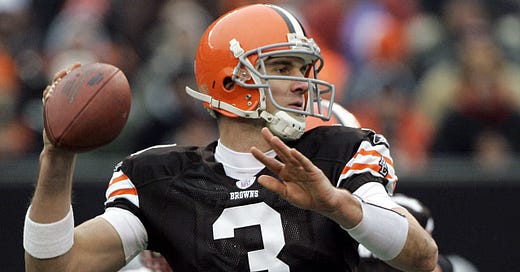


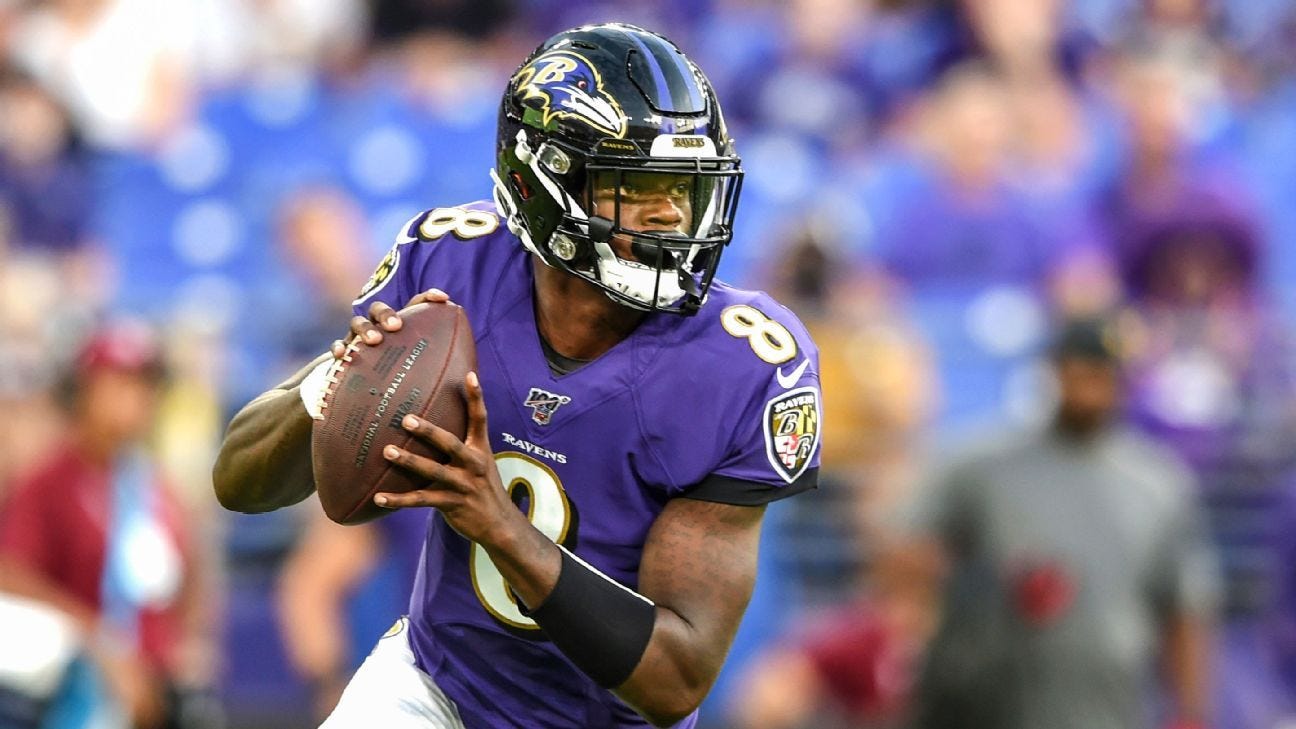
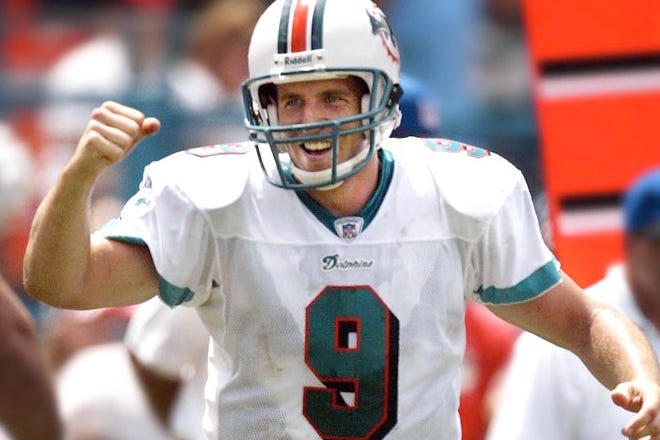
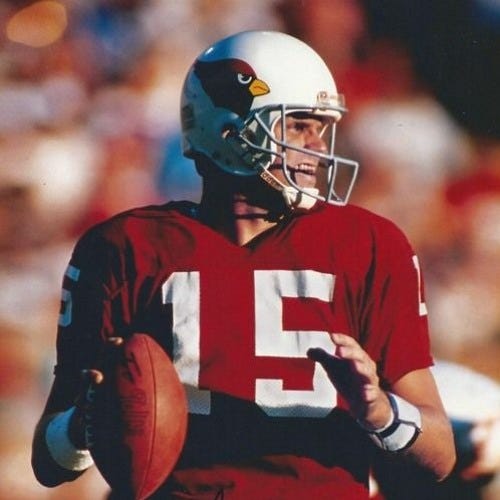

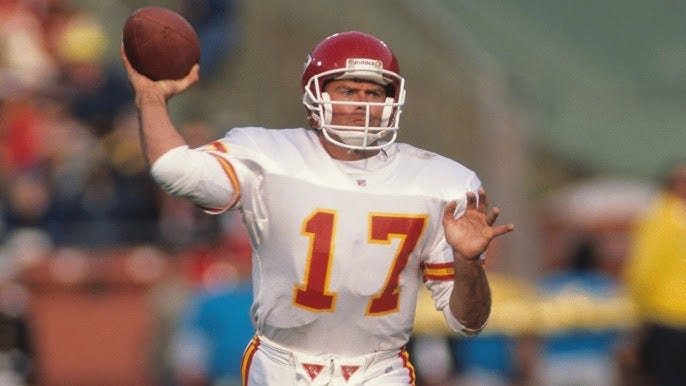
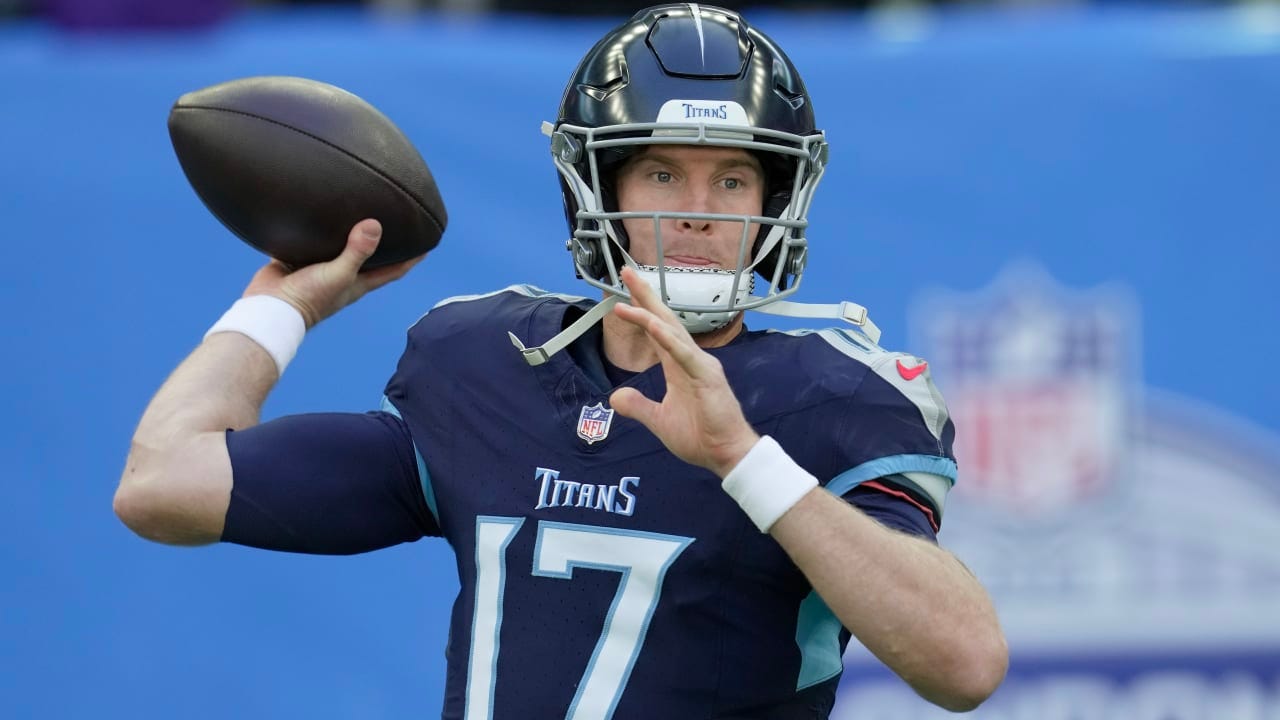
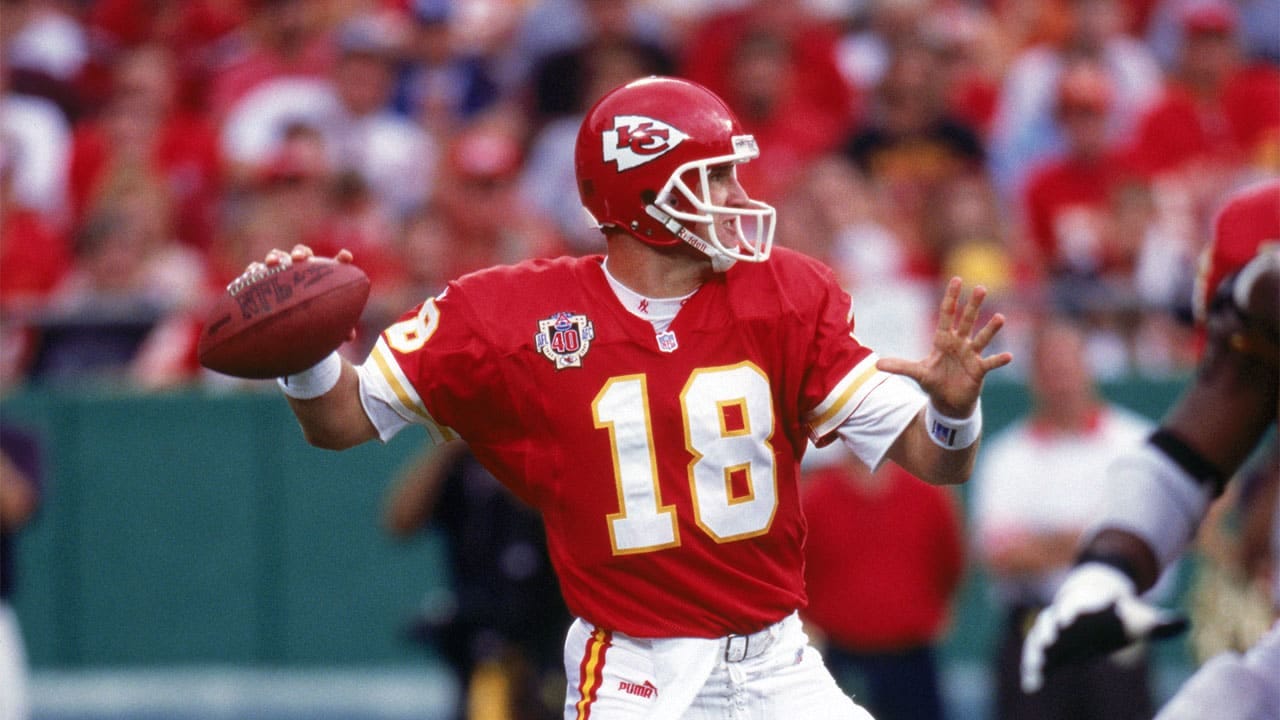
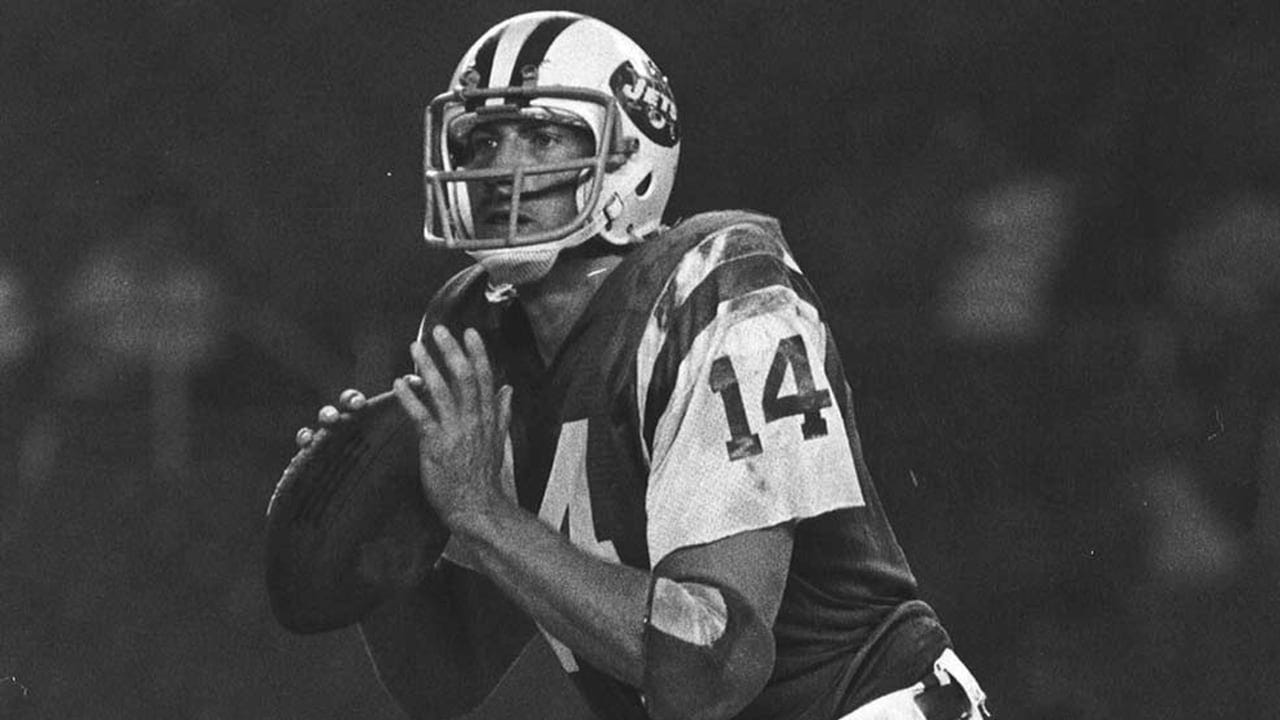
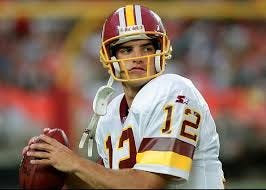
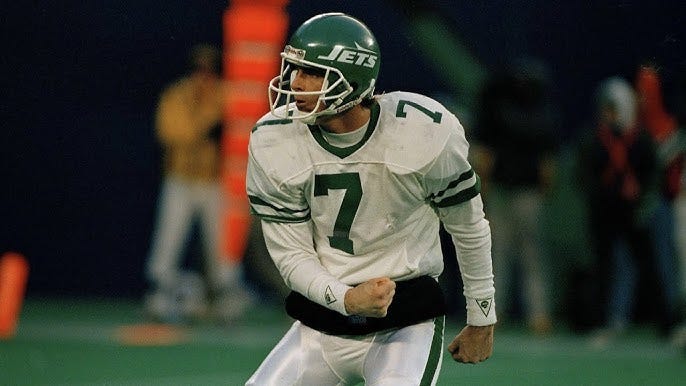
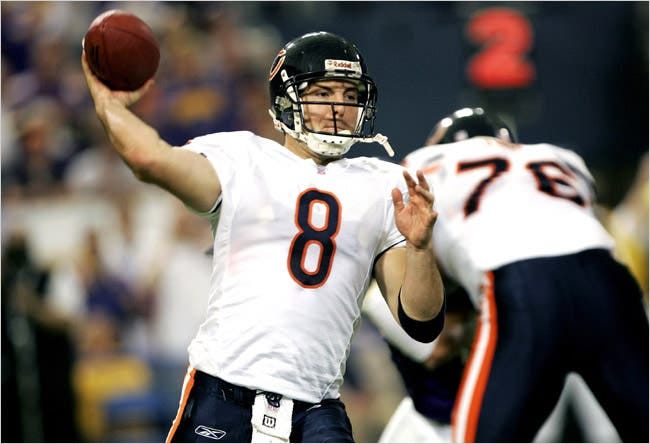
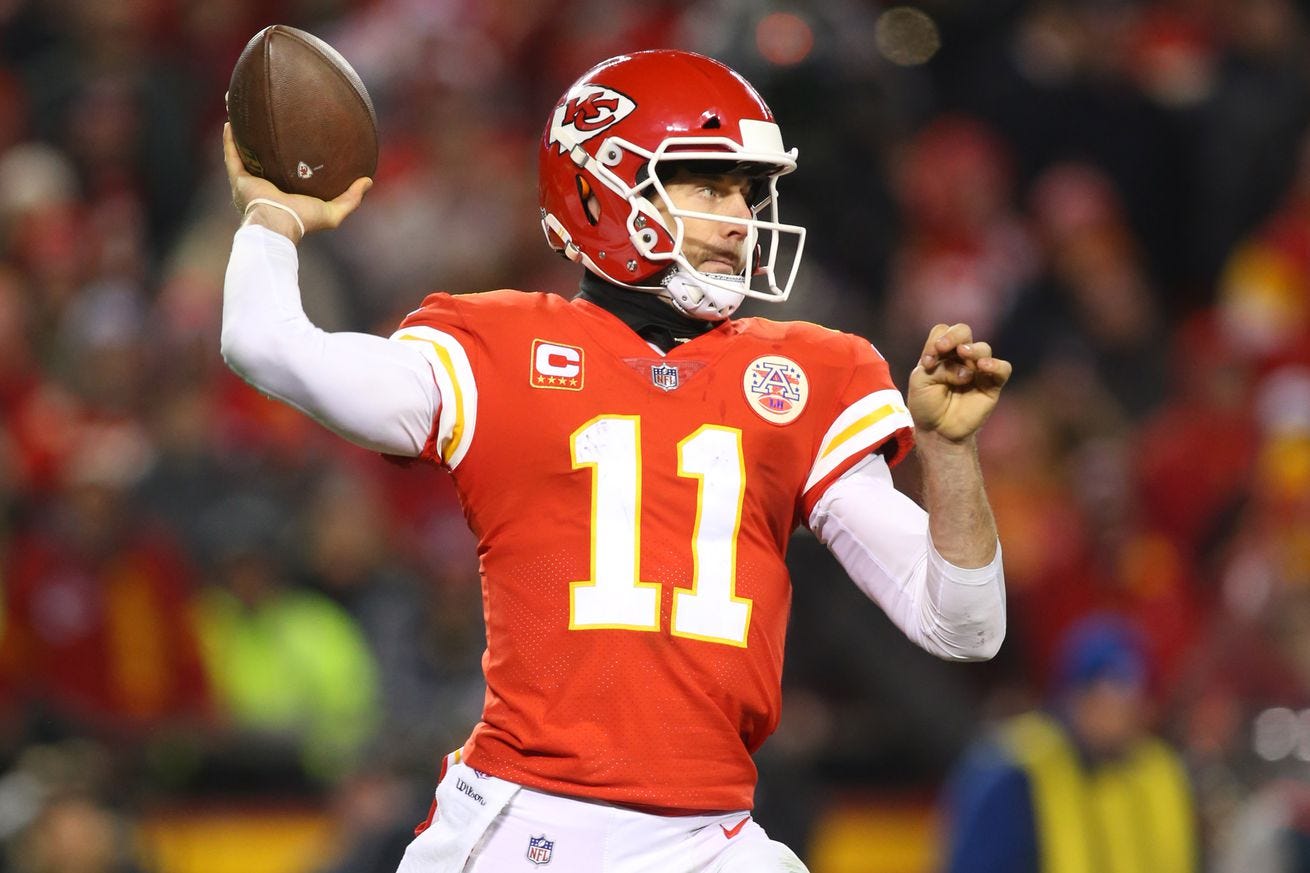
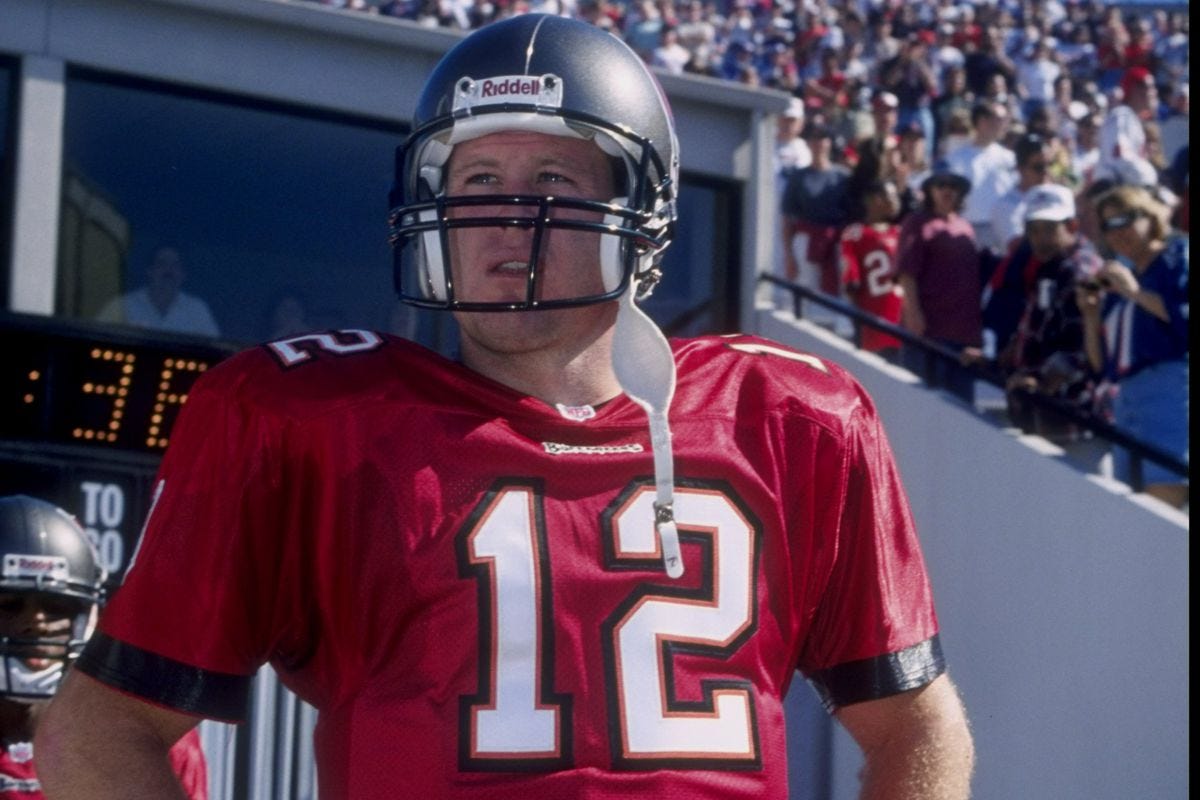

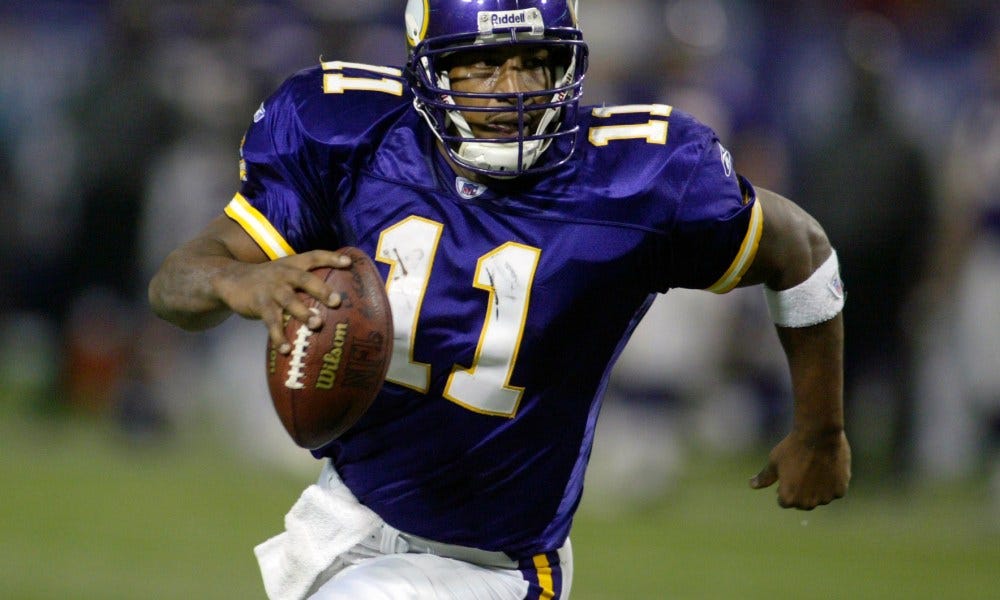
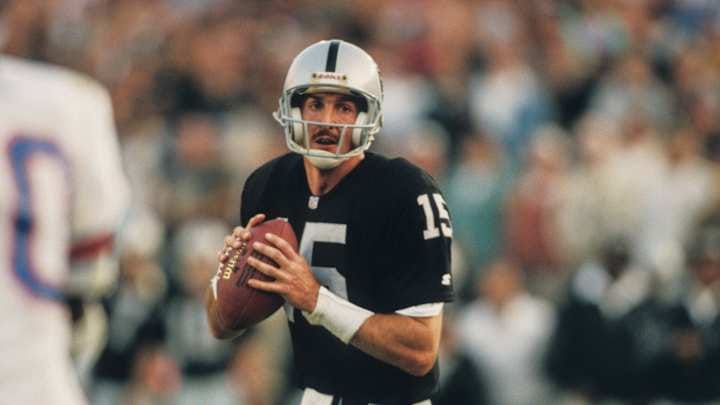
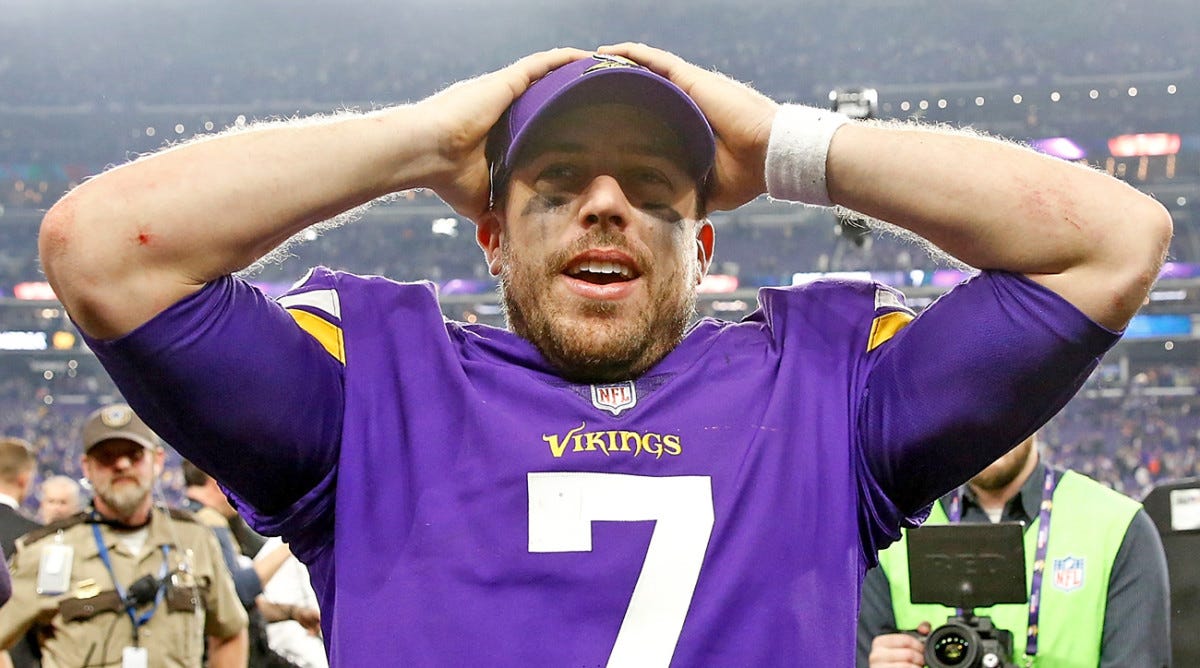
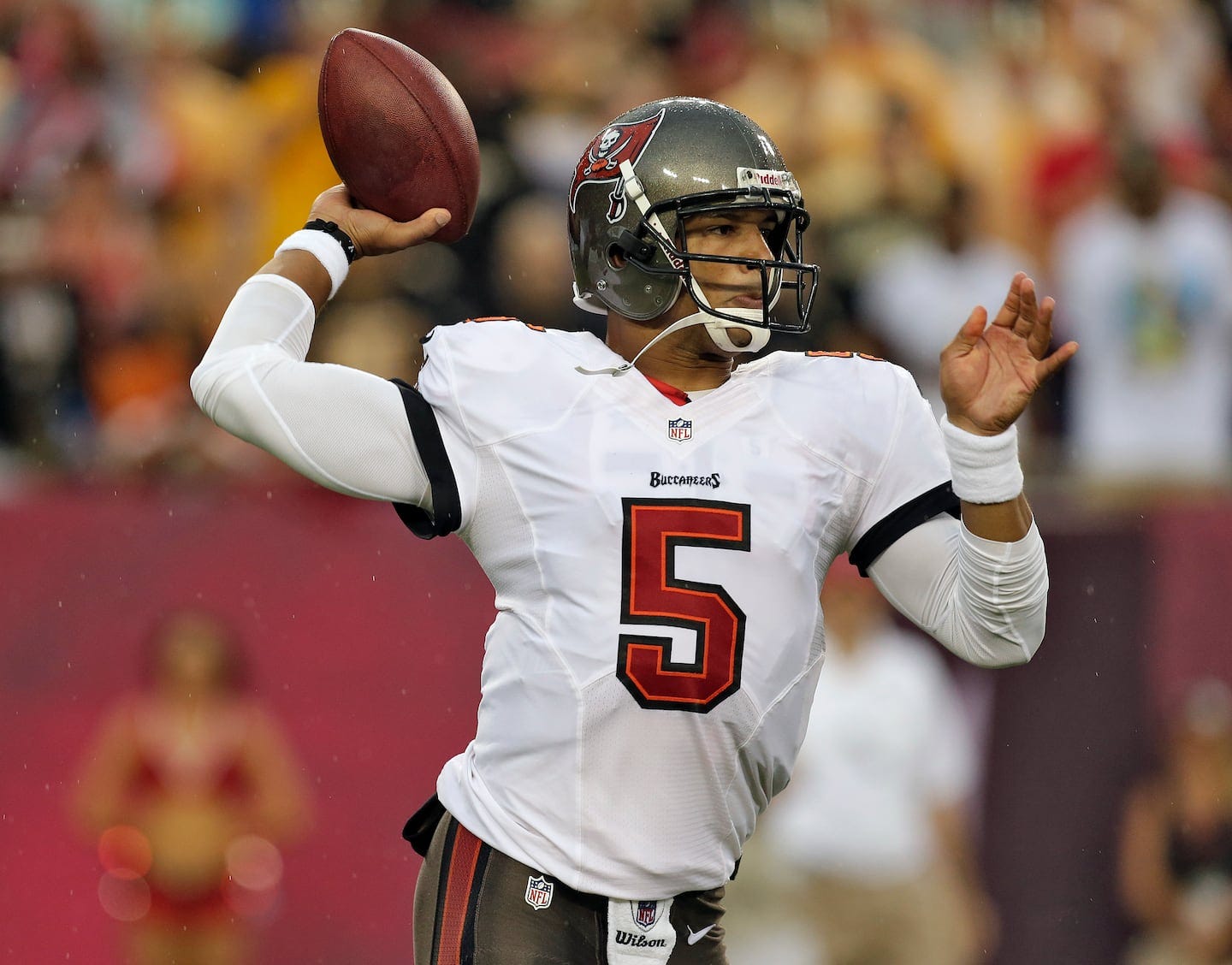
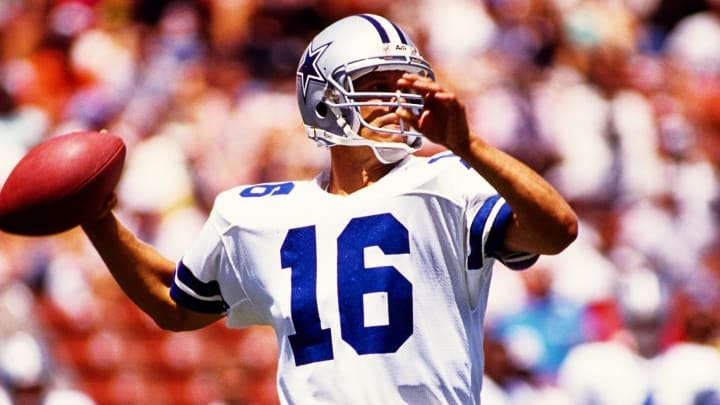
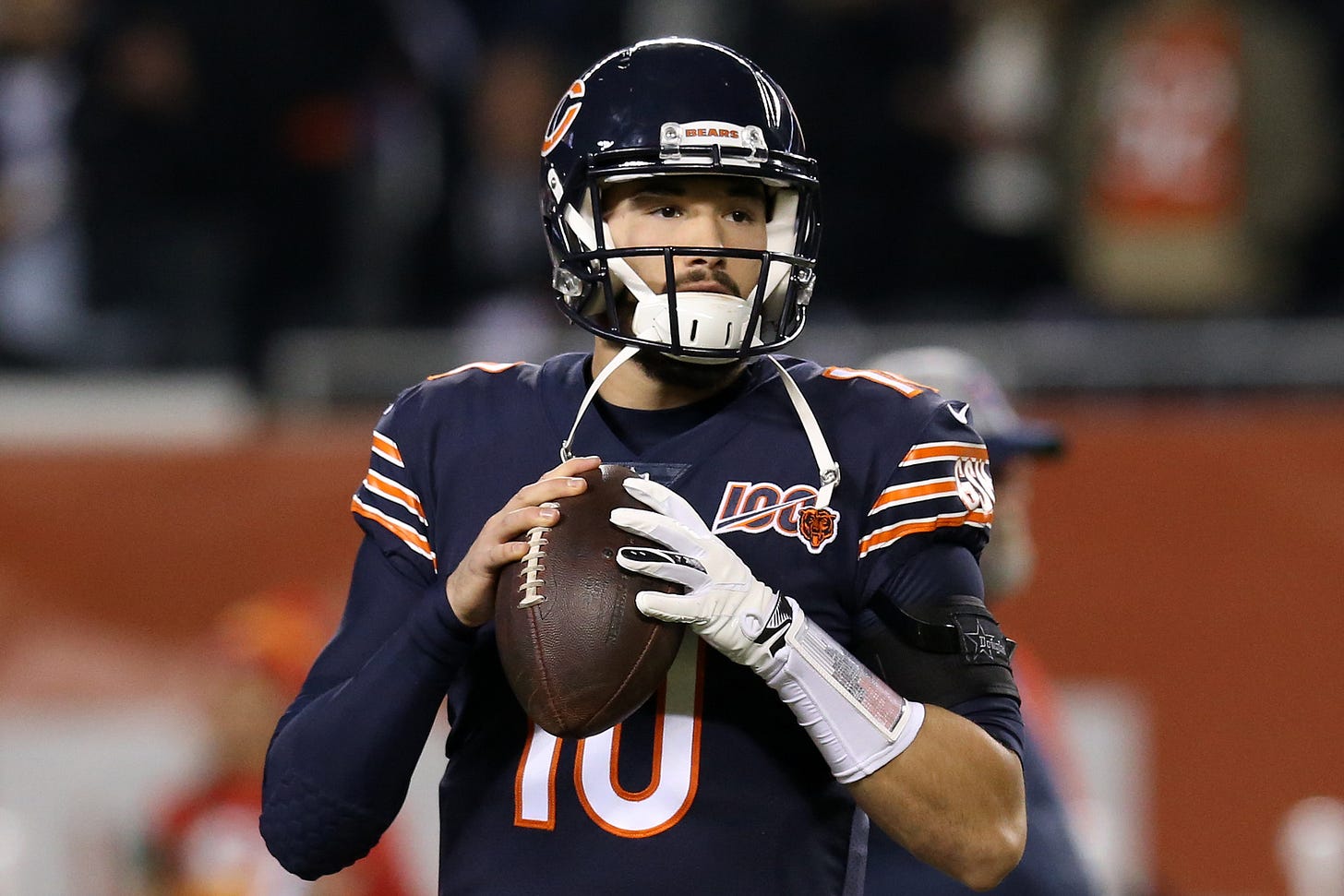
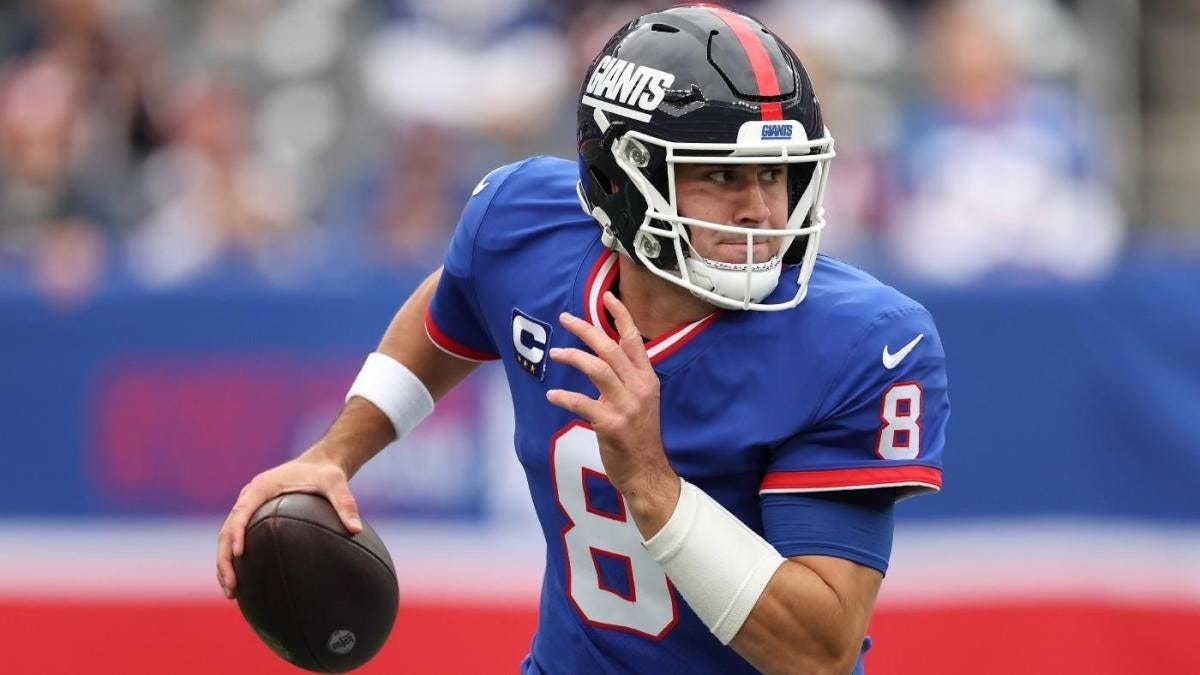
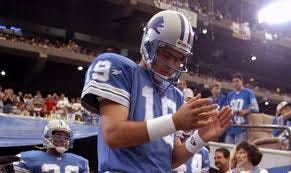
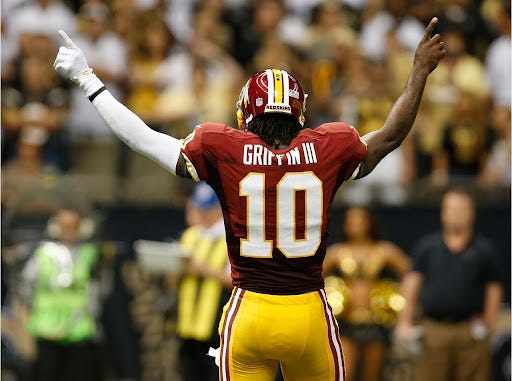
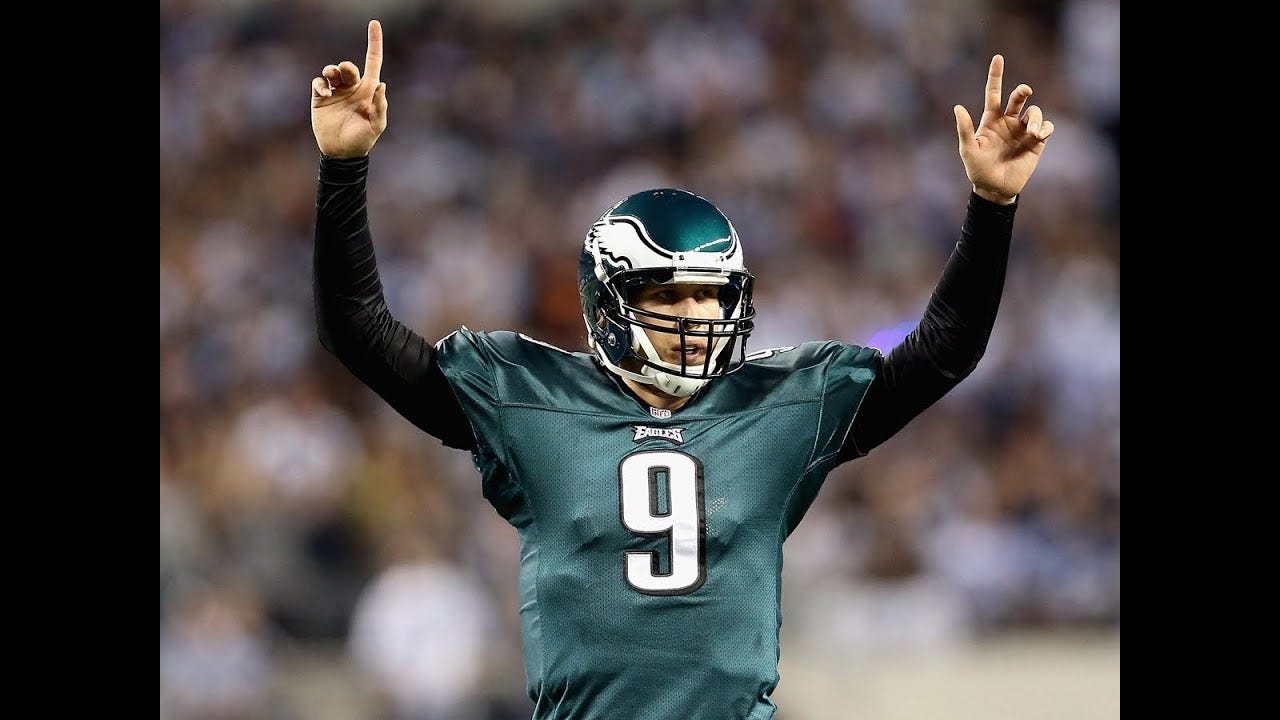
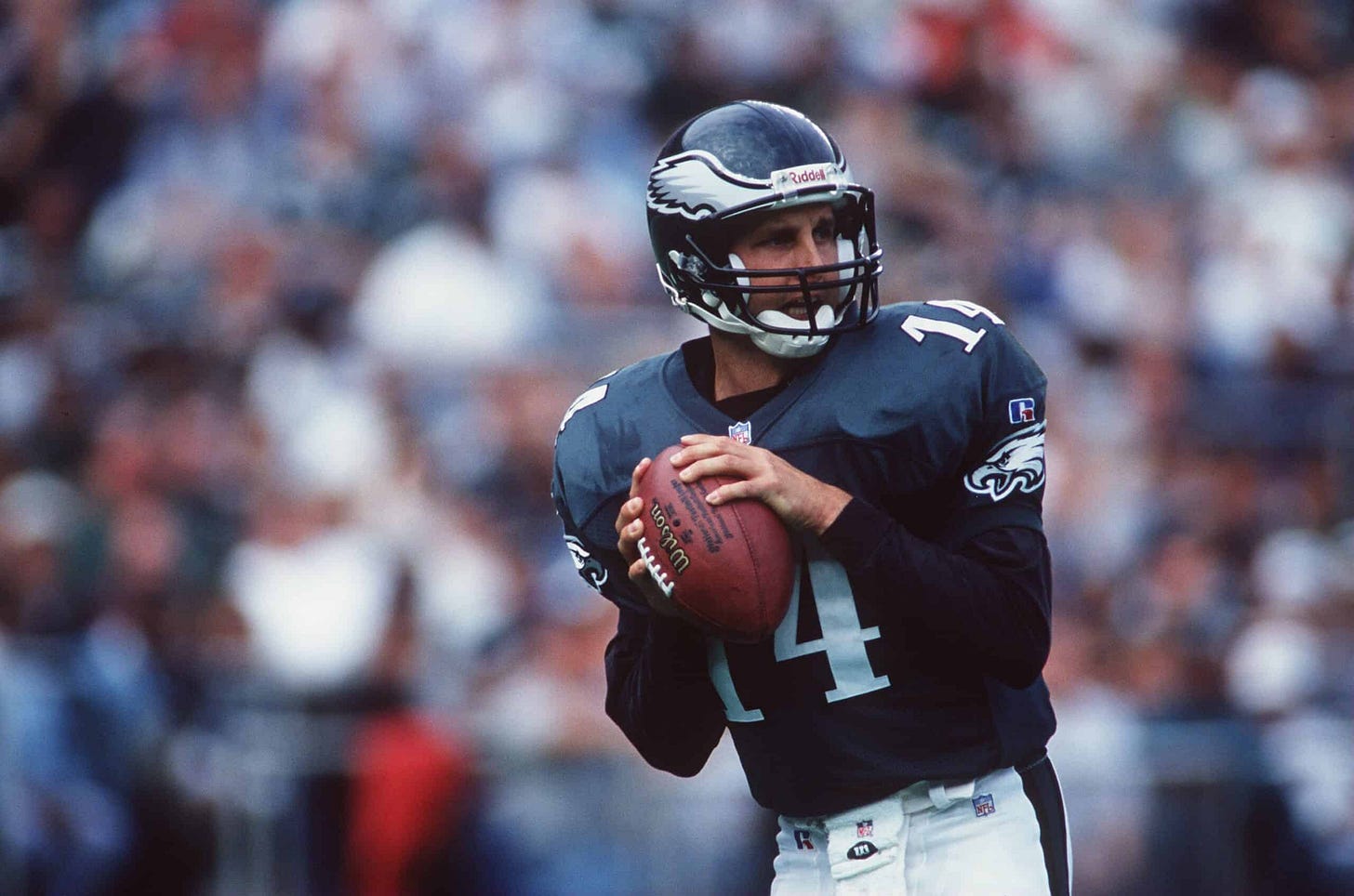
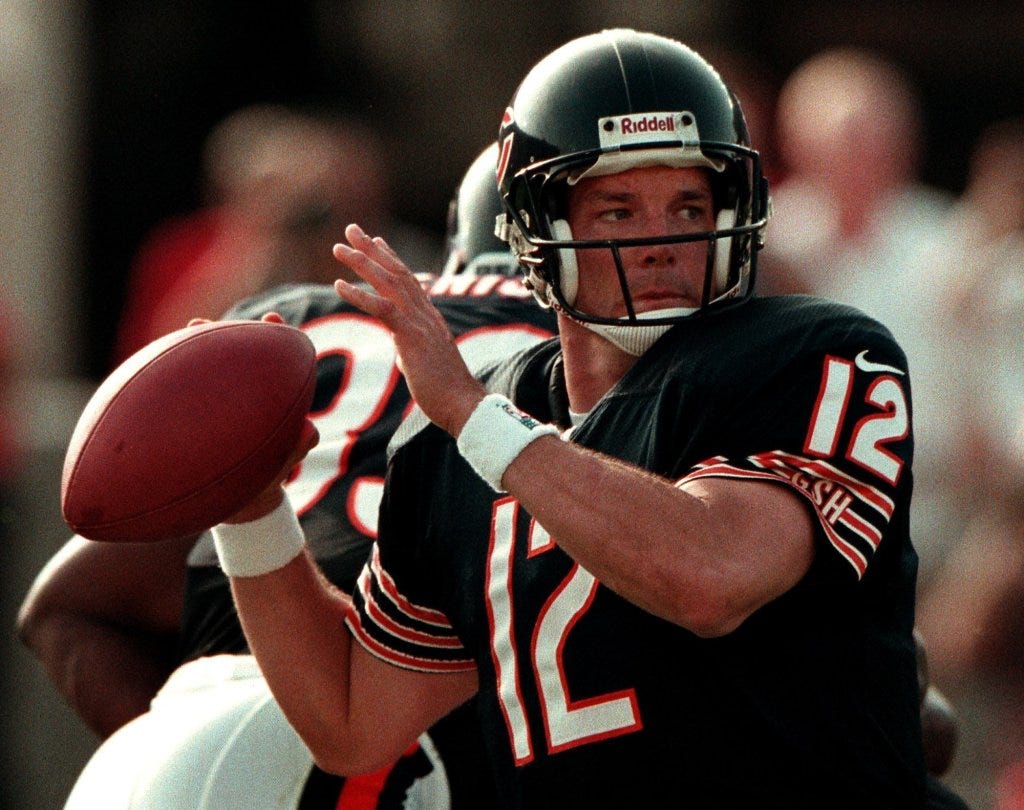
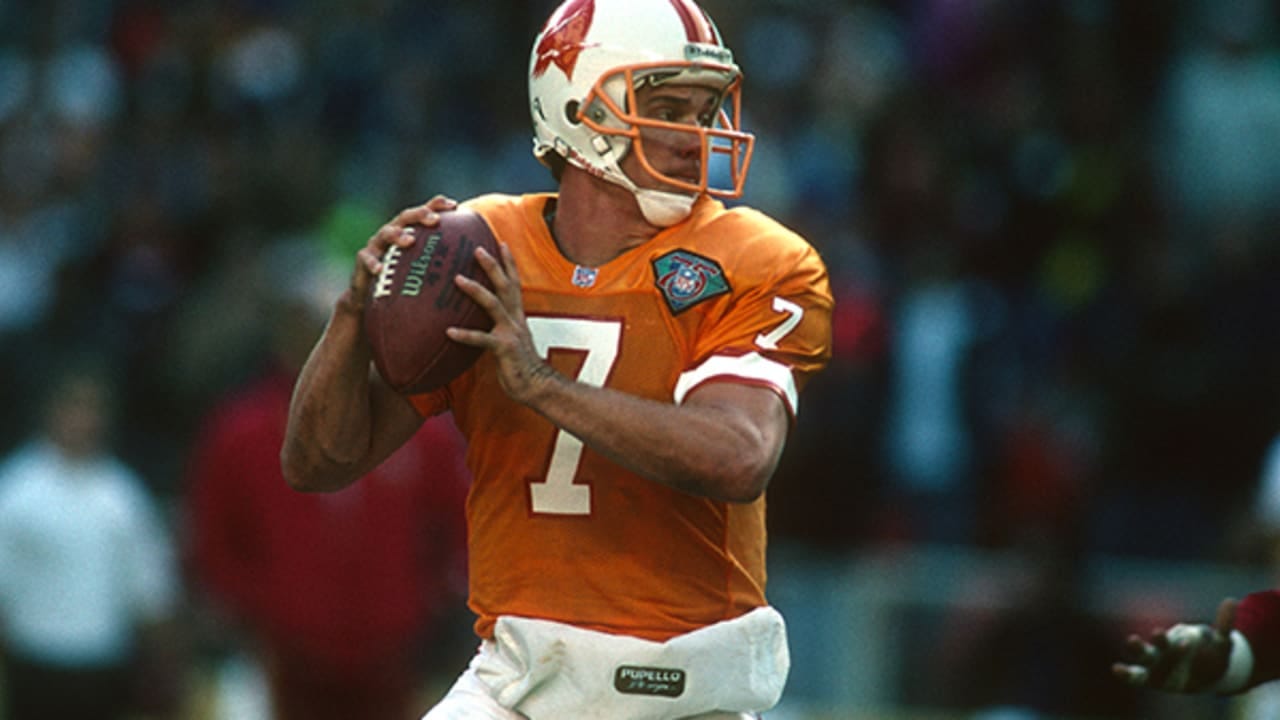

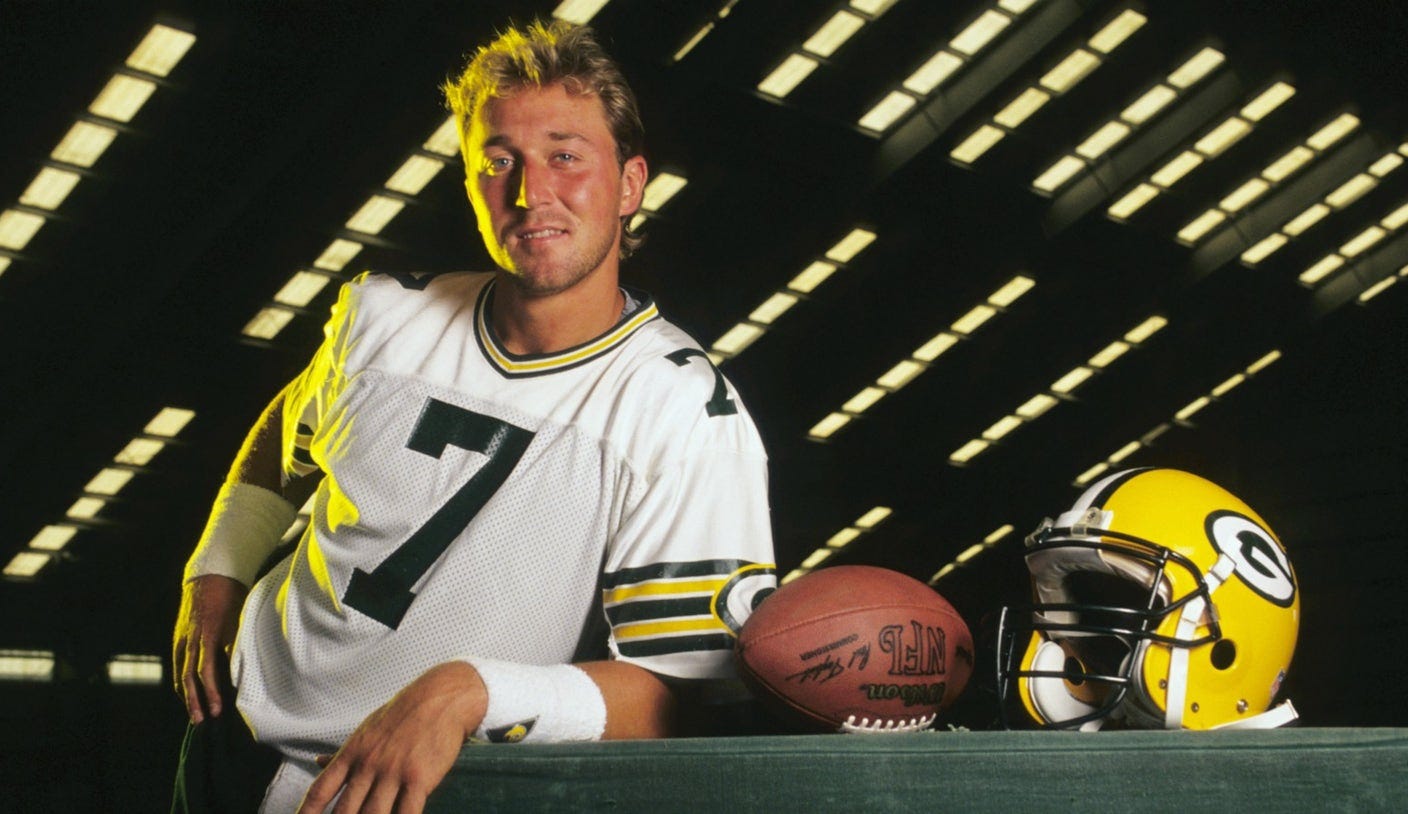

Love/hate seeing so many of my Buccaneers QBs on this list, haha, great writeup -- the Majik Man was awesome in fantasy football!
I'm not a Washington fan, but I am still annoyed to this day by the way they handled Griffin's knee injury. Of all the names on this list, I think he could have most easily avoided one-off status, with just a little bit of common sense by the organization.
What a fun list. I think it just goes to show that, even with all the preparation and hard work that goes into it, football really is a very unpredictable game with relatively small sample sizes.